David Simon's Blog, page 16
February 1, 2017
A Flight to Israel
Please take this as in invitation to join me on a 14 day trip to the Holy Land. To see the full agenda or to sign up, click the links. You will be rewarded through personal discoveries and experiences by going on this journey.Our entry into Israel during our 2018 visit will take place near Lod, a modern city of 72,000 citizens. Ben Gurion Airport is located near the city in a compound just off Israeli Highway 1. The location of the airport and the surrounding cities provide a beautiful entry as we begin our tour of Eretz Yisrael (the land of Israel). This airport has served as the arrival point for tourists, businessmen, world leaders and Israelis who are returning home. Egyptian pharaoh Thutmose III recorded the existence of a city at this location in 1465 BC.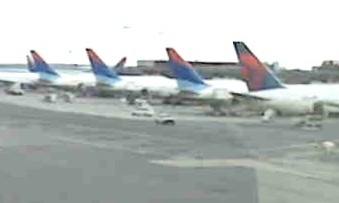 Awaiting our flight to IsraelOur flight will depart in the evening, taking us across the Atlantic Ocean and most of Europe during the nighttime hours. We will try to sleep (some successfully) before being served a meal as we fly near the Mediterranean Sea. The blue waters of this sea are beautiful from above, and we will enjoy their peacefulness from the sky.
Awaiting our flight to IsraelOur flight will depart in the evening, taking us across the Atlantic Ocean and most of Europe during the nighttime hours. We will try to sleep (some successfully) before being served a meal as we fly near the Mediterranean Sea. The blue waters of this sea are beautiful from above, and we will enjoy their peacefulness from the sky.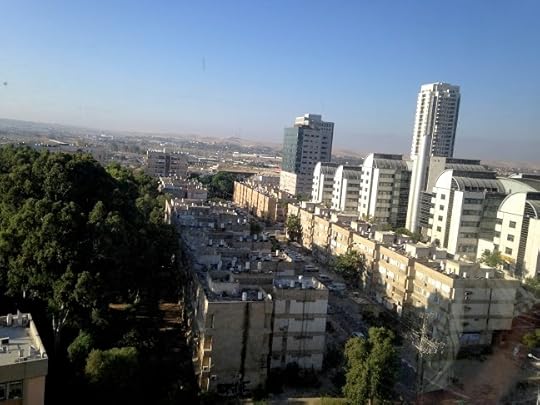 View of modern housing as we fly into IsraelAfter the meal we will approach the coastline of Israel. We will notice the tan coloration of a semi-arid paradise. As we cross the coastline and beaches we will notice high-rise apartments starting near the coast and expanding toward the hill country which lies in front of us. This is the architecture of modern in Israel. Many immigrants from around the world inhabit apartments which are built over much earlier communities. Lod and the plane of Sharon are noted in the BIble for several events which happened there.
View of modern housing as we fly into IsraelAfter the meal we will approach the coastline of Israel. We will notice the tan coloration of a semi-arid paradise. As we cross the coastline and beaches we will notice high-rise apartments starting near the coast and expanding toward the hill country which lies in front of us. This is the architecture of modern in Israel. Many immigrants from around the world inhabit apartments which are built over much earlier communities. Lod and the plane of Sharon are noted in the BIble for several events which happened there. 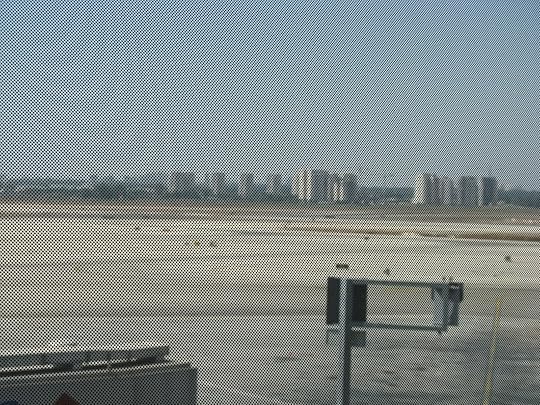 Lod from Ben-Gurion Airport, IsraelLod, which also carries the Greek name Lydda is located about twelve miles east of Tel-Aviv. It is formerly and currently on one of two major roads leading from the seacoast up to Jerusalem. Joshua, David, Solomon, and many others are known to have visited this city. The apostle Peter visited a man named Aeneas, who was paralyzed and had been bedridden for eight years and healed him.
Lod from Ben-Gurion Airport, IsraelLod, which also carries the Greek name Lydda is located about twelve miles east of Tel-Aviv. It is formerly and currently on one of two major roads leading from the seacoast up to Jerusalem. Joshua, David, Solomon, and many others are known to have visited this city. The apostle Peter visited a man named Aeneas, who was paralyzed and had been bedridden for eight years and healed him. 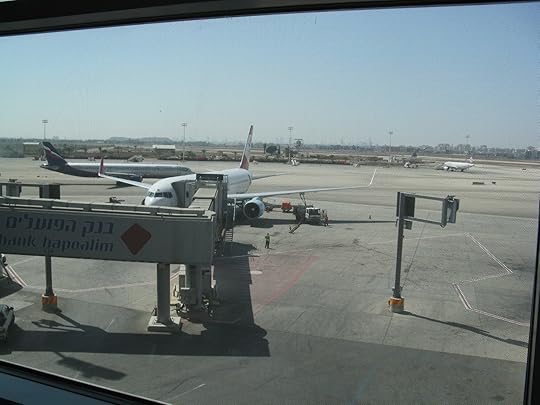 View from Ben Gurion Airport, IsraelWe will disembark from the plane, walk down a long hallway (with glass windows offering some visibility to the area) and then down a spiral ramp towards the main terminal. We will know we arrived at the main part of the building when we see the Mezuzah.
View from Ben Gurion Airport, IsraelWe will disembark from the plane, walk down a long hallway (with glass windows offering some visibility to the area) and then down a spiral ramp towards the main terminal. We will know we arrived at the main part of the building when we see the Mezuzah.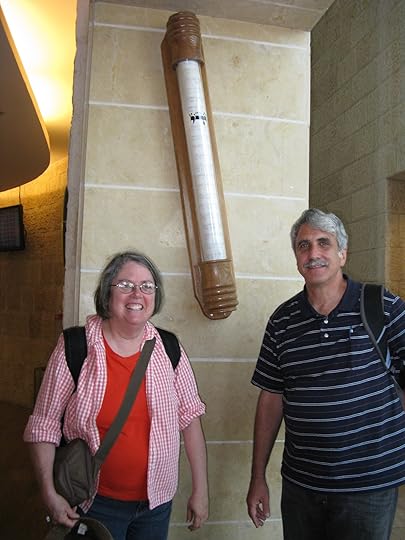 Mezuzah, Ben Gurion Airport, IsraelMezuzahs are attached to doors on most Jewish homes as a reminder for all who enter to honor God. The Mezuzah which is made up of two parts, an outer decorative box and an inner parchment scroll containing scriptures from Deuteronomy 6:4-9 and 11:13-21. The placement of the box on the doorpost reminds the Jewish people of a sign commanded by God during the exodus from Egypt (Exodus 12:7), Upon entering the main terminal of the airport we will see one of the largest Mezuzahs in the world.
Mezuzah, Ben Gurion Airport, IsraelMezuzahs are attached to doors on most Jewish homes as a reminder for all who enter to honor God. The Mezuzah which is made up of two parts, an outer decorative box and an inner parchment scroll containing scriptures from Deuteronomy 6:4-9 and 11:13-21. The placement of the box on the doorpost reminds the Jewish people of a sign commanded by God during the exodus from Egypt (Exodus 12:7), Upon entering the main terminal of the airport we will see one of the largest Mezuzahs in the world.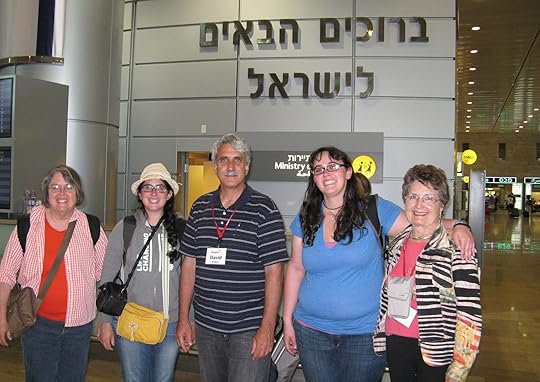 Entry area Ben Gurion Airport, IsraelOnce in the airport we will pass through customs, pick up our baggage and meet our guide. Once we clear customs we will be off on our adventure.
Entry area Ben Gurion Airport, IsraelOnce in the airport we will pass through customs, pick up our baggage and meet our guide. Once we clear customs we will be off on our adventure.
 Awaiting our flight to IsraelOur flight will depart in the evening, taking us across the Atlantic Ocean and most of Europe during the nighttime hours. We will try to sleep (some successfully) before being served a meal as we fly near the Mediterranean Sea. The blue waters of this sea are beautiful from above, and we will enjoy their peacefulness from the sky.
Awaiting our flight to IsraelOur flight will depart in the evening, taking us across the Atlantic Ocean and most of Europe during the nighttime hours. We will try to sleep (some successfully) before being served a meal as we fly near the Mediterranean Sea. The blue waters of this sea are beautiful from above, and we will enjoy their peacefulness from the sky. View of modern housing as we fly into IsraelAfter the meal we will approach the coastline of Israel. We will notice the tan coloration of a semi-arid paradise. As we cross the coastline and beaches we will notice high-rise apartments starting near the coast and expanding toward the hill country which lies in front of us. This is the architecture of modern in Israel. Many immigrants from around the world inhabit apartments which are built over much earlier communities. Lod and the plane of Sharon are noted in the BIble for several events which happened there.
View of modern housing as we fly into IsraelAfter the meal we will approach the coastline of Israel. We will notice the tan coloration of a semi-arid paradise. As we cross the coastline and beaches we will notice high-rise apartments starting near the coast and expanding toward the hill country which lies in front of us. This is the architecture of modern in Israel. Many immigrants from around the world inhabit apartments which are built over much earlier communities. Lod and the plane of Sharon are noted in the BIble for several events which happened there.  Lod from Ben-Gurion Airport, IsraelLod, which also carries the Greek name Lydda is located about twelve miles east of Tel-Aviv. It is formerly and currently on one of two major roads leading from the seacoast up to Jerusalem. Joshua, David, Solomon, and many others are known to have visited this city. The apostle Peter visited a man named Aeneas, who was paralyzed and had been bedridden for eight years and healed him.
Lod from Ben-Gurion Airport, IsraelLod, which also carries the Greek name Lydda is located about twelve miles east of Tel-Aviv. It is formerly and currently on one of two major roads leading from the seacoast up to Jerusalem. Joshua, David, Solomon, and many others are known to have visited this city. The apostle Peter visited a man named Aeneas, who was paralyzed and had been bedridden for eight years and healed him.  View from Ben Gurion Airport, IsraelWe will disembark from the plane, walk down a long hallway (with glass windows offering some visibility to the area) and then down a spiral ramp towards the main terminal. We will know we arrived at the main part of the building when we see the Mezuzah.
View from Ben Gurion Airport, IsraelWe will disembark from the plane, walk down a long hallway (with glass windows offering some visibility to the area) and then down a spiral ramp towards the main terminal. We will know we arrived at the main part of the building when we see the Mezuzah. Mezuzah, Ben Gurion Airport, IsraelMezuzahs are attached to doors on most Jewish homes as a reminder for all who enter to honor God. The Mezuzah which is made up of two parts, an outer decorative box and an inner parchment scroll containing scriptures from Deuteronomy 6:4-9 and 11:13-21. The placement of the box on the doorpost reminds the Jewish people of a sign commanded by God during the exodus from Egypt (Exodus 12:7), Upon entering the main terminal of the airport we will see one of the largest Mezuzahs in the world.
Mezuzah, Ben Gurion Airport, IsraelMezuzahs are attached to doors on most Jewish homes as a reminder for all who enter to honor God. The Mezuzah which is made up of two parts, an outer decorative box and an inner parchment scroll containing scriptures from Deuteronomy 6:4-9 and 11:13-21. The placement of the box on the doorpost reminds the Jewish people of a sign commanded by God during the exodus from Egypt (Exodus 12:7), Upon entering the main terminal of the airport we will see one of the largest Mezuzahs in the world. Entry area Ben Gurion Airport, IsraelOnce in the airport we will pass through customs, pick up our baggage and meet our guide. Once we clear customs we will be off on our adventure.
Entry area Ben Gurion Airport, IsraelOnce in the airport we will pass through customs, pick up our baggage and meet our guide. Once we clear customs we will be off on our adventure.
Published on February 01, 2017 03:30
January 30, 2017
Remembering U.S.
I have written several times about my ancestry on this blog. I am from eastern European and Jewish ancestry and a third generation American. From time to time (often in January) I look back into my ancestry to see if there are any new records or discoveries. The stories of my family are interesting as they capture the difficulty of immigration and assimilation into a new country. The United States is built on the strength and determination of immigrants.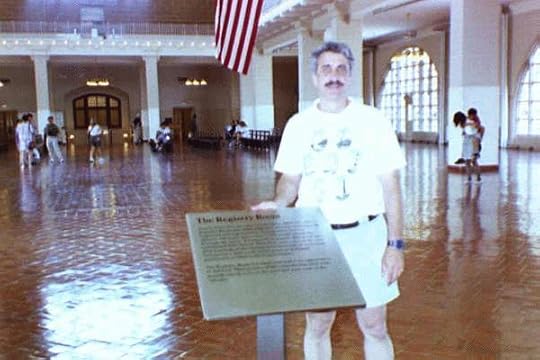 Immigration Hall at Ellis Island in New YorkI am amazed at how often people in our nation forget (or do not care) about the heritage of our nation. Foreigners face many problems including intense persecution and vetting. I have personally faced some of this and hear stories about discrimination from within my family. But my family was strong and we survived and have did well in a new land despite, or possibly because of the hardships. Because when you face difficulty it forces you to work harder in order to overcome.
Immigration Hall at Ellis Island in New YorkI am amazed at how often people in our nation forget (or do not care) about the heritage of our nation. Foreigners face many problems including intense persecution and vetting. I have personally faced some of this and hear stories about discrimination from within my family. But my family was strong and we survived and have did well in a new land despite, or possibly because of the hardships. Because when you face difficulty it forces you to work harder in order to overcome. Ellis Island in New York HarborThe first immigrants to this nation faced many difficulties. These difficulties are recorded in history. The Pilgrims (of Thanksgiving fame) immigrated to a new land in order to escape systematic persecutions and imprisonments. Many of the first settlers in Virginia were tradesmen who sought to better themselves by finding either treasure or a new life. The colony of Georgia was founded by debtors who came to America for a fresh start. In all three cases most of the settlers died in the first two years. The persistence of those who died and those who lived have encouraged Americans for generations. These founders of our nation worked hard to established strong communities which survive even to this day.
Ellis Island in New York HarborThe first immigrants to this nation faced many difficulties. These difficulties are recorded in history. The Pilgrims (of Thanksgiving fame) immigrated to a new land in order to escape systematic persecutions and imprisonments. Many of the first settlers in Virginia were tradesmen who sought to better themselves by finding either treasure or a new life. The colony of Georgia was founded by debtors who came to America for a fresh start. In all three cases most of the settlers died in the first two years. The persistence of those who died and those who lived have encouraged Americans for generations. These founders of our nation worked hard to established strong communities which survive even to this day.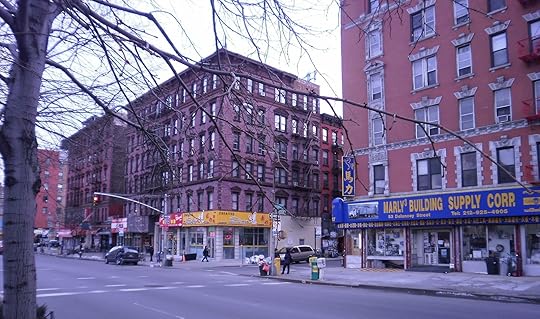 My Grandfather saw these buildings in the lat 1890'sAs I researched my family I visited the Tenement Museum in New York City. We learned how lower Manhattan was populated by waves of Italian, Irish, German, Jewish and Chinese immigrants. These families were poor. Some were persecuted. All of them were able to find a way to cross the ocean to America. And once in the United States they contributed to our greatness as a nation. These poor immigrants, many from non-Christian faiths became leaders in the real estate, food, energy, space, education and banking industries.
My Grandfather saw these buildings in the lat 1890'sAs I researched my family I visited the Tenement Museum in New York City. We learned how lower Manhattan was populated by waves of Italian, Irish, German, Jewish and Chinese immigrants. These families were poor. Some were persecuted. All of them were able to find a way to cross the ocean to America. And once in the United States they contributed to our greatness as a nation. These poor immigrants, many from non-Christian faiths became leaders in the real estate, food, energy, space, education and banking industries.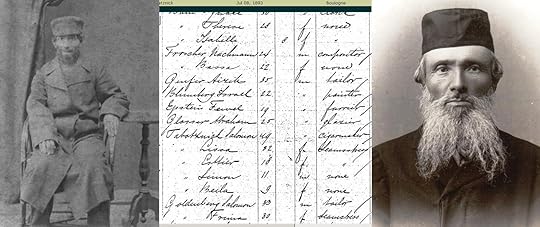 Solomon Tobachnikof and ship log. Also Yankel LevineMy grandparents came to the United States in this time period. Simon Tobachnikof sold clothing and later was involved in the real estate market (as was uncle Abe). Ben Finkelstein was worked in the garment industry. The Schulmans were leather workers and later owned restaurants in Cincinnati.
Solomon Tobachnikof and ship log. Also Yankel LevineMy grandparents came to the United States in this time period. Simon Tobachnikof sold clothing and later was involved in the real estate market (as was uncle Abe). Ben Finkelstein was worked in the garment industry. The Schulmans were leather workers and later owned restaurants in Cincinnati.
Many immigrants have come to escape hardship or to find a new life. Our President’s grandfather came from Germany in this time period. Ivanka Kushner’s in-laws were eastern European survivors of the concentration camps. The United States of that time welcomed refugees.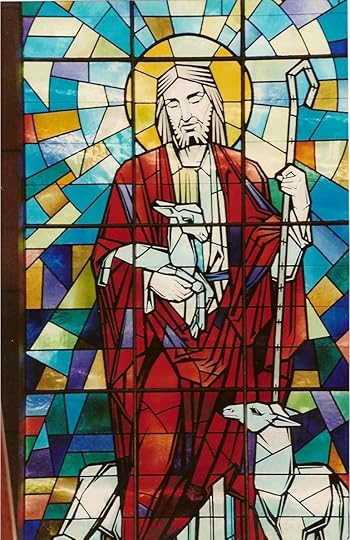 The New Testament teaches God is love - 1 John 4:8Because of my connection with the past I have been given opportunity to connect with immigrants of the present. I have ministered to people from Mexico, El Salvador, Nicaragua, Guatemala and Colombia. Some of these people are legal, others illegal. All of these people contributed to our economy, many I knew worked in agricultural and construction. I have attempted to assist the illegal internationals in their effort to become legal, only to find the wall insurmountable for many who have helped the state of North Carolina prosper.
The New Testament teaches God is love - 1 John 4:8Because of my connection with the past I have been given opportunity to connect with immigrants of the present. I have ministered to people from Mexico, El Salvador, Nicaragua, Guatemala and Colombia. Some of these people are legal, others illegal. All of these people contributed to our economy, many I knew worked in agricultural and construction. I have attempted to assist the illegal internationals in their effort to become legal, only to find the wall insurmountable for many who have helped the state of North Carolina prosper. Many immigrants have lived in lower ManhattanI have worked with Chinese and South Korean immigrants. I also know Palestinians who seek to live peaceful lives with all others in the United States. The struggles and dreams of many immigrants are similar to my grandparent’s struggles and dreams.
Many immigrants have lived in lower ManhattanI have worked with Chinese and South Korean immigrants. I also know Palestinians who seek to live peaceful lives with all others in the United States. The struggles and dreams of many immigrants are similar to my grandparent’s struggles and dreams. 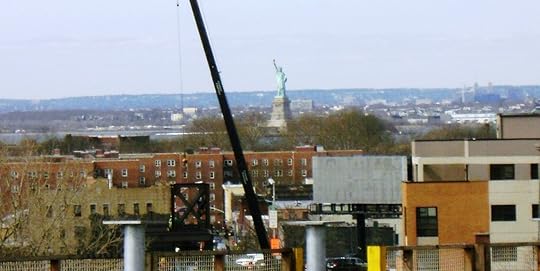 The Statue of Liberty welcomes immigrants to our shores
The Statue of Liberty welcomes immigrants to our shores
In time periods when our doors are open to immigration the United States flourishes. During times of isolation our economy suffers. Immigrants are the new customers who shop at our stores, join our workforce and purchase homes in our communities. They proudly desire to join our ranks through the immigration and naturalization process if we provide them opportunity through a well planned pathway. When we make the process difficult or impossible through poor planning, spontaneous decisions (or orders) the result is confusion, closed doors, distrust and illegalities. I pray for our government and a plan that will bring clarity rather than confusion. I look forward to a time when we will help persecuted peoples assimilate rather into our land with an absence of hate. From the very beginning every wave of immigrants has brought greatness. I look forward to the next wave which will make us great … again.
 Immigration Hall at Ellis Island in New YorkI am amazed at how often people in our nation forget (or do not care) about the heritage of our nation. Foreigners face many problems including intense persecution and vetting. I have personally faced some of this and hear stories about discrimination from within my family. But my family was strong and we survived and have did well in a new land despite, or possibly because of the hardships. Because when you face difficulty it forces you to work harder in order to overcome.
Immigration Hall at Ellis Island in New YorkI am amazed at how often people in our nation forget (or do not care) about the heritage of our nation. Foreigners face many problems including intense persecution and vetting. I have personally faced some of this and hear stories about discrimination from within my family. But my family was strong and we survived and have did well in a new land despite, or possibly because of the hardships. Because when you face difficulty it forces you to work harder in order to overcome. Ellis Island in New York HarborThe first immigrants to this nation faced many difficulties. These difficulties are recorded in history. The Pilgrims (of Thanksgiving fame) immigrated to a new land in order to escape systematic persecutions and imprisonments. Many of the first settlers in Virginia were tradesmen who sought to better themselves by finding either treasure or a new life. The colony of Georgia was founded by debtors who came to America for a fresh start. In all three cases most of the settlers died in the first two years. The persistence of those who died and those who lived have encouraged Americans for generations. These founders of our nation worked hard to established strong communities which survive even to this day.
Ellis Island in New York HarborThe first immigrants to this nation faced many difficulties. These difficulties are recorded in history. The Pilgrims (of Thanksgiving fame) immigrated to a new land in order to escape systematic persecutions and imprisonments. Many of the first settlers in Virginia were tradesmen who sought to better themselves by finding either treasure or a new life. The colony of Georgia was founded by debtors who came to America for a fresh start. In all three cases most of the settlers died in the first two years. The persistence of those who died and those who lived have encouraged Americans for generations. These founders of our nation worked hard to established strong communities which survive even to this day. My Grandfather saw these buildings in the lat 1890'sAs I researched my family I visited the Tenement Museum in New York City. We learned how lower Manhattan was populated by waves of Italian, Irish, German, Jewish and Chinese immigrants. These families were poor. Some were persecuted. All of them were able to find a way to cross the ocean to America. And once in the United States they contributed to our greatness as a nation. These poor immigrants, many from non-Christian faiths became leaders in the real estate, food, energy, space, education and banking industries.
My Grandfather saw these buildings in the lat 1890'sAs I researched my family I visited the Tenement Museum in New York City. We learned how lower Manhattan was populated by waves of Italian, Irish, German, Jewish and Chinese immigrants. These families were poor. Some were persecuted. All of them were able to find a way to cross the ocean to America. And once in the United States they contributed to our greatness as a nation. These poor immigrants, many from non-Christian faiths became leaders in the real estate, food, energy, space, education and banking industries. Solomon Tobachnikof and ship log. Also Yankel LevineMy grandparents came to the United States in this time period. Simon Tobachnikof sold clothing and later was involved in the real estate market (as was uncle Abe). Ben Finkelstein was worked in the garment industry. The Schulmans were leather workers and later owned restaurants in Cincinnati.
Solomon Tobachnikof and ship log. Also Yankel LevineMy grandparents came to the United States in this time period. Simon Tobachnikof sold clothing and later was involved in the real estate market (as was uncle Abe). Ben Finkelstein was worked in the garment industry. The Schulmans were leather workers and later owned restaurants in Cincinnati.Many immigrants have come to escape hardship or to find a new life. Our President’s grandfather came from Germany in this time period. Ivanka Kushner’s in-laws were eastern European survivors of the concentration camps. The United States of that time welcomed refugees.
 The New Testament teaches God is love - 1 John 4:8Because of my connection with the past I have been given opportunity to connect with immigrants of the present. I have ministered to people from Mexico, El Salvador, Nicaragua, Guatemala and Colombia. Some of these people are legal, others illegal. All of these people contributed to our economy, many I knew worked in agricultural and construction. I have attempted to assist the illegal internationals in their effort to become legal, only to find the wall insurmountable for many who have helped the state of North Carolina prosper.
The New Testament teaches God is love - 1 John 4:8Because of my connection with the past I have been given opportunity to connect with immigrants of the present. I have ministered to people from Mexico, El Salvador, Nicaragua, Guatemala and Colombia. Some of these people are legal, others illegal. All of these people contributed to our economy, many I knew worked in agricultural and construction. I have attempted to assist the illegal internationals in their effort to become legal, only to find the wall insurmountable for many who have helped the state of North Carolina prosper. Many immigrants have lived in lower ManhattanI have worked with Chinese and South Korean immigrants. I also know Palestinians who seek to live peaceful lives with all others in the United States. The struggles and dreams of many immigrants are similar to my grandparent’s struggles and dreams.
Many immigrants have lived in lower ManhattanI have worked with Chinese and South Korean immigrants. I also know Palestinians who seek to live peaceful lives with all others in the United States. The struggles and dreams of many immigrants are similar to my grandparent’s struggles and dreams.  The Statue of Liberty welcomes immigrants to our shores
The Statue of Liberty welcomes immigrants to our shoresIn time periods when our doors are open to immigration the United States flourishes. During times of isolation our economy suffers. Immigrants are the new customers who shop at our stores, join our workforce and purchase homes in our communities. They proudly desire to join our ranks through the immigration and naturalization process if we provide them opportunity through a well planned pathway. When we make the process difficult or impossible through poor planning, spontaneous decisions (or orders) the result is confusion, closed doors, distrust and illegalities. I pray for our government and a plan that will bring clarity rather than confusion. I look forward to a time when we will help persecuted peoples assimilate rather into our land with an absence of hate. From the very beginning every wave of immigrants has brought greatness. I look forward to the next wave which will make us great … again.
Published on January 30, 2017 14:02
January 27, 2017
A trip to Israel, How hard will it be?
Many people fear overseas travel, lots of walking on tours, odd foods, strange customs, foreign languages, attacks, or various other types of hardships that will face them on foreign soil. They quote a line from the Wizard of Oz, “There’s no place like home,” and choose to remain at home.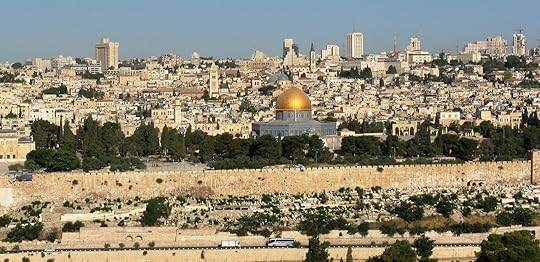 A view of Jerusalem from the Mount of OlivesWhile there is nothing wrong with home (there are a lot of built in comforts created by the homeowner), the person who refuses to travel also robs themselves of great experiences. The person who chooses to stay at home will miss out on a fantastic opportunity offered through a 14 day trip to the Holy Land in May 2018. People who chooses to travel to Israel will enjoy a great adventure, will see where Abraham, Isaac, Jacob, Jesus, and almost every other person listed in the Bible walked and lived, and will come away with new understanding of what they hear at Church every Sunday.
A view of Jerusalem from the Mount of OlivesWhile there is nothing wrong with home (there are a lot of built in comforts created by the homeowner), the person who refuses to travel also robs themselves of great experiences. The person who chooses to stay at home will miss out on a fantastic opportunity offered through a 14 day trip to the Holy Land in May 2018. People who chooses to travel to Israel will enjoy a great adventure, will see where Abraham, Isaac, Jacob, Jesus, and almost every other person listed in the Bible walked and lived, and will come away with new understanding of what they hear at Church every Sunday.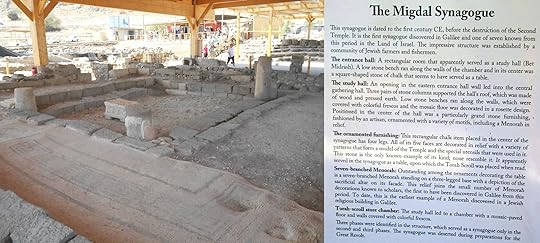 The Synagogue at Migdal where Jesus taughtBut will the trip be hard people ask. And I answer, except for a long flight across the Ocean and Europe, the trip will not be hard. And any hardship in the flight is well rewarded on the ground as we walk the Bible, hear history, and see the events of the Bible come to life.
The Synagogue at Migdal where Jesus taughtBut will the trip be hard people ask. And I answer, except for a long flight across the Ocean and Europe, the trip will not be hard. And any hardship in the flight is well rewarded on the ground as we walk the Bible, hear history, and see the events of the Bible come to life. One choice on the Israeli Breakfast menuOur daily schedule on our 14 day trip to Israel begins with a breakfast banquet with fruits, different egg dishes, cereal, cheeses and many other items. In some places we will discover new dishes like shakshuka. The one thing many people will note is that there are not many meats. Orthodox Jews who keep a kosher diet do not mix meat and milk. Breakfast is a dairy meal. We will have time to eat, and to talk with others around the breakfast table.
One choice on the Israeli Breakfast menuOur daily schedule on our 14 day trip to Israel begins with a breakfast banquet with fruits, different egg dishes, cereal, cheeses and many other items. In some places we will discover new dishes like shakshuka. The one thing many people will note is that there are not many meats. Orthodox Jews who keep a kosher diet do not mix meat and milk. Breakfast is a dairy meal. We will have time to eat, and to talk with others around the breakfast table. Comfortable buses for travelingFollowing breakfast we will board the bus. Our trip is arranged in a way that many nights we stay in the same hotel for several nights. On days when we move to different lodgings, we will leave our luggage outside the door of our room, and porters will pick up the luggage and have it at the bus to load (and for us to check) before we board. Tips to the hotel workers are included in the trip payment.
Comfortable buses for travelingFollowing breakfast we will board the bus. Our trip is arranged in a way that many nights we stay in the same hotel for several nights. On days when we move to different lodgings, we will leave our luggage outside the door of our room, and porters will pick up the luggage and have it at the bus to load (and for us to check) before we board. Tips to the hotel workers are included in the trip payment.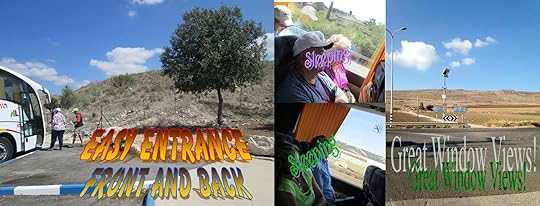 Some people take naps while riding the bus between stopsThe bus which we will enjoy during the entire length of our trip has comfortable seats which recline. On longer drives some people will go to sleep. The windows are large so we have good visibility as our driver navigates the smooth roads of Israel and the West Bank. There is a shelf above the seat to store any items (like water, hats and souvenirs) which we carry with us.
Some people take naps while riding the bus between stopsThe bus which we will enjoy during the entire length of our trip has comfortable seats which recline. On longer drives some people will go to sleep. The windows are large so we have good visibility as our driver navigates the smooth roads of Israel and the West Bank. There is a shelf above the seat to store any items (like water, hats and souvenirs) which we carry with us.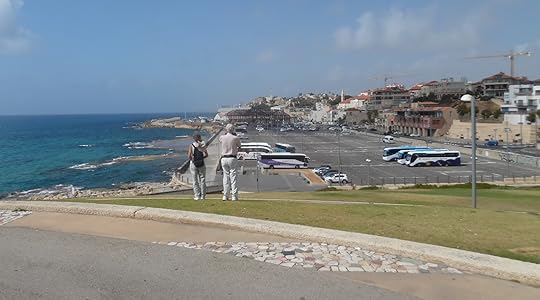 After the bus drops us off in Joppa, it parks hereWe exit the bus close to most attractions. When there is a walk the tour is planned in a loop so those who tire can sit down and the group will return. Extra time is included on each stop so those who are more adventurous and can go further. Those who are limber will have a chance to climb into the caves in Qumran. On lengthier hikes, such as on Mount Arbel our through the Wilderness of Zin non-climbers can wake up a little later and meet us at the top of the mountain, or ride the bus to the end of the hike.
After the bus drops us off in Joppa, it parks hereWe exit the bus close to most attractions. When there is a walk the tour is planned in a loop so those who tire can sit down and the group will return. Extra time is included on each stop so those who are more adventurous and can go further. Those who are limber will have a chance to climb into the caves in Qumran. On lengthier hikes, such as on Mount Arbel our through the Wilderness of Zin non-climbers can wake up a little later and meet us at the top of the mountain, or ride the bus to the end of the hike. Hiking Zin Canyon where Moses and Israel campedWhile on our trip we will see and hear the customs of the people in Israel. We will learn the differences between Secular Jews and the Orthodox. We will also learn and talk about different groups of Muslims, Palestinians, the devout, the secular and the Druze. We will talk about clothing, traditions, prayers and lifestyle. We will learn about the culture of the people historically, traditionally and currently. We will see and experience the people within the protective bubble of our tour group, which is large enough to prevent culture shock.
Hiking Zin Canyon where Moses and Israel campedWhile on our trip we will see and hear the customs of the people in Israel. We will learn the differences between Secular Jews and the Orthodox. We will also learn and talk about different groups of Muslims, Palestinians, the devout, the secular and the Druze. We will talk about clothing, traditions, prayers and lifestyle. We will learn about the culture of the people historically, traditionally and currently. We will see and experience the people within the protective bubble of our tour group, which is large enough to prevent culture shock. Shopping in Jerusalem - there are always peopleWe will hear and learn foreign languages of the people in Israel. We will gain new words in Hebrew and Arabic. We will learn greetings like “good morning” and words of appreciation like “thank you.” The new words are not required, just interesting.
Shopping in Jerusalem - there are always peopleWe will hear and learn foreign languages of the people in Israel. We will gain new words in Hebrew and Arabic. We will learn greetings like “good morning” and words of appreciation like “thank you.” The new words are not required, just interesting. These new friends in Joppa know how to speak our languageMany people fear violence while in Israel. On my tours to Israel, and the trips taken by millions of other pilgrims not one single incident of fear has occurred. Israel depends on the tourist industry, so we will find we are protected by the Israeli military in any area which could be high risk. We will find we are protected from areas where violence might occur. The nation of Israel sends out warnings and schedules which help us avoid any problems which could occur. Our Israeli tour guide and bus drivers are well acquainted with protocol and have been hired to keep us safe.
These new friends in Joppa know how to speak our languageMany people fear violence while in Israel. On my tours to Israel, and the trips taken by millions of other pilgrims not one single incident of fear has occurred. Israel depends on the tourist industry, so we will find we are protected by the Israeli military in any area which could be high risk. We will find we are protected from areas where violence might occur. The nation of Israel sends out warnings and schedules which help us avoid any problems which could occur. Our Israeli tour guide and bus drivers are well acquainted with protocol and have been hired to keep us safe. There is always protection around when you need itWhile we are traveling we will be given time for lunch. The normal day will end with a generous supper banquet. At supper we will be able to choose between various salads, meats, vegetables and desserts. There will also be fruits, there are always locally grown fruits in Israel. I love the fresh dates.
There is always protection around when you need itWhile we are traveling we will be given time for lunch. The normal day will end with a generous supper banquet. At supper we will be able to choose between various salads, meats, vegetables and desserts. There will also be fruits, there are always locally grown fruits in Israel. I love the fresh dates. Our lodging on the Sea of Galilee. Date Palms in backgroundIn the evening people can go to bed early, or take a nighttime side trip. In the desert or in Galilee these evening gatherings or often devotionals or teachings. There will be opportunities to meet interesting people at our kibbutz in rural areas. In Jerusalem we will walk to the Western Wall (Kotel), to overviews of the city, to interesting shops and to sights not seen by many tourists.
Our lodging on the Sea of Galilee. Date Palms in backgroundIn the evening people can go to bed early, or take a nighttime side trip. In the desert or in Galilee these evening gatherings or often devotionals or teachings. There will be opportunities to meet interesting people at our kibbutz in rural areas. In Jerusalem we will walk to the Western Wall (Kotel), to overviews of the city, to interesting shops and to sights not seen by many tourists.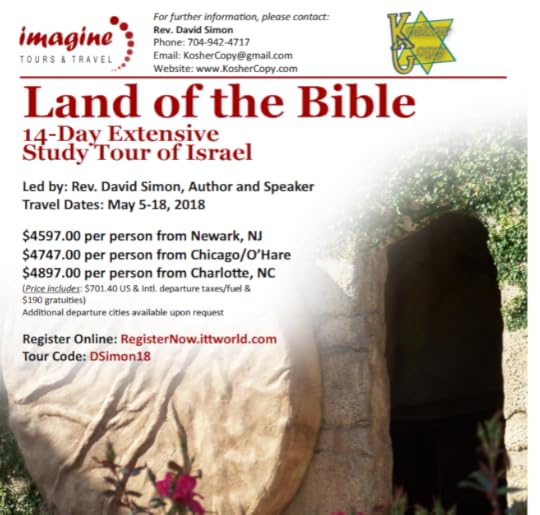 Travel brochure. Check it out on the link below!
Travel brochure. Check it out on the link below!
Our trip to Israel will be taken in luxury. We will see the sites and sights but we will avoid most of the hardships people fear in a foreign land. We will be with people who are very familiar with customs of the people and American needs. Any issue will be navigated without difficulties faced by those who must go it alone. The customs and culture created for our tour group will result in an enjoyable and informative trip filled with many memorable experiences. The 14 day trip to the Holy Land in May 2018 is something you do not want to miss! Sign up today and receive a discount.
 A view of Jerusalem from the Mount of OlivesWhile there is nothing wrong with home (there are a lot of built in comforts created by the homeowner), the person who refuses to travel also robs themselves of great experiences. The person who chooses to stay at home will miss out on a fantastic opportunity offered through a 14 day trip to the Holy Land in May 2018. People who chooses to travel to Israel will enjoy a great adventure, will see where Abraham, Isaac, Jacob, Jesus, and almost every other person listed in the Bible walked and lived, and will come away with new understanding of what they hear at Church every Sunday.
A view of Jerusalem from the Mount of OlivesWhile there is nothing wrong with home (there are a lot of built in comforts created by the homeowner), the person who refuses to travel also robs themselves of great experiences. The person who chooses to stay at home will miss out on a fantastic opportunity offered through a 14 day trip to the Holy Land in May 2018. People who chooses to travel to Israel will enjoy a great adventure, will see where Abraham, Isaac, Jacob, Jesus, and almost every other person listed in the Bible walked and lived, and will come away with new understanding of what they hear at Church every Sunday. The Synagogue at Migdal where Jesus taughtBut will the trip be hard people ask. And I answer, except for a long flight across the Ocean and Europe, the trip will not be hard. And any hardship in the flight is well rewarded on the ground as we walk the Bible, hear history, and see the events of the Bible come to life.
The Synagogue at Migdal where Jesus taughtBut will the trip be hard people ask. And I answer, except for a long flight across the Ocean and Europe, the trip will not be hard. And any hardship in the flight is well rewarded on the ground as we walk the Bible, hear history, and see the events of the Bible come to life. One choice on the Israeli Breakfast menuOur daily schedule on our 14 day trip to Israel begins with a breakfast banquet with fruits, different egg dishes, cereal, cheeses and many other items. In some places we will discover new dishes like shakshuka. The one thing many people will note is that there are not many meats. Orthodox Jews who keep a kosher diet do not mix meat and milk. Breakfast is a dairy meal. We will have time to eat, and to talk with others around the breakfast table.
One choice on the Israeli Breakfast menuOur daily schedule on our 14 day trip to Israel begins with a breakfast banquet with fruits, different egg dishes, cereal, cheeses and many other items. In some places we will discover new dishes like shakshuka. The one thing many people will note is that there are not many meats. Orthodox Jews who keep a kosher diet do not mix meat and milk. Breakfast is a dairy meal. We will have time to eat, and to talk with others around the breakfast table. Comfortable buses for travelingFollowing breakfast we will board the bus. Our trip is arranged in a way that many nights we stay in the same hotel for several nights. On days when we move to different lodgings, we will leave our luggage outside the door of our room, and porters will pick up the luggage and have it at the bus to load (and for us to check) before we board. Tips to the hotel workers are included in the trip payment.
Comfortable buses for travelingFollowing breakfast we will board the bus. Our trip is arranged in a way that many nights we stay in the same hotel for several nights. On days when we move to different lodgings, we will leave our luggage outside the door of our room, and porters will pick up the luggage and have it at the bus to load (and for us to check) before we board. Tips to the hotel workers are included in the trip payment. Some people take naps while riding the bus between stopsThe bus which we will enjoy during the entire length of our trip has comfortable seats which recline. On longer drives some people will go to sleep. The windows are large so we have good visibility as our driver navigates the smooth roads of Israel and the West Bank. There is a shelf above the seat to store any items (like water, hats and souvenirs) which we carry with us.
Some people take naps while riding the bus between stopsThe bus which we will enjoy during the entire length of our trip has comfortable seats which recline. On longer drives some people will go to sleep. The windows are large so we have good visibility as our driver navigates the smooth roads of Israel and the West Bank. There is a shelf above the seat to store any items (like water, hats and souvenirs) which we carry with us. After the bus drops us off in Joppa, it parks hereWe exit the bus close to most attractions. When there is a walk the tour is planned in a loop so those who tire can sit down and the group will return. Extra time is included on each stop so those who are more adventurous and can go further. Those who are limber will have a chance to climb into the caves in Qumran. On lengthier hikes, such as on Mount Arbel our through the Wilderness of Zin non-climbers can wake up a little later and meet us at the top of the mountain, or ride the bus to the end of the hike.
After the bus drops us off in Joppa, it parks hereWe exit the bus close to most attractions. When there is a walk the tour is planned in a loop so those who tire can sit down and the group will return. Extra time is included on each stop so those who are more adventurous and can go further. Those who are limber will have a chance to climb into the caves in Qumran. On lengthier hikes, such as on Mount Arbel our through the Wilderness of Zin non-climbers can wake up a little later and meet us at the top of the mountain, or ride the bus to the end of the hike. Hiking Zin Canyon where Moses and Israel campedWhile on our trip we will see and hear the customs of the people in Israel. We will learn the differences between Secular Jews and the Orthodox. We will also learn and talk about different groups of Muslims, Palestinians, the devout, the secular and the Druze. We will talk about clothing, traditions, prayers and lifestyle. We will learn about the culture of the people historically, traditionally and currently. We will see and experience the people within the protective bubble of our tour group, which is large enough to prevent culture shock.
Hiking Zin Canyon where Moses and Israel campedWhile on our trip we will see and hear the customs of the people in Israel. We will learn the differences between Secular Jews and the Orthodox. We will also learn and talk about different groups of Muslims, Palestinians, the devout, the secular and the Druze. We will talk about clothing, traditions, prayers and lifestyle. We will learn about the culture of the people historically, traditionally and currently. We will see and experience the people within the protective bubble of our tour group, which is large enough to prevent culture shock. Shopping in Jerusalem - there are always peopleWe will hear and learn foreign languages of the people in Israel. We will gain new words in Hebrew and Arabic. We will learn greetings like “good morning” and words of appreciation like “thank you.” The new words are not required, just interesting.
Shopping in Jerusalem - there are always peopleWe will hear and learn foreign languages of the people in Israel. We will gain new words in Hebrew and Arabic. We will learn greetings like “good morning” and words of appreciation like “thank you.” The new words are not required, just interesting. These new friends in Joppa know how to speak our languageMany people fear violence while in Israel. On my tours to Israel, and the trips taken by millions of other pilgrims not one single incident of fear has occurred. Israel depends on the tourist industry, so we will find we are protected by the Israeli military in any area which could be high risk. We will find we are protected from areas where violence might occur. The nation of Israel sends out warnings and schedules which help us avoid any problems which could occur. Our Israeli tour guide and bus drivers are well acquainted with protocol and have been hired to keep us safe.
These new friends in Joppa know how to speak our languageMany people fear violence while in Israel. On my tours to Israel, and the trips taken by millions of other pilgrims not one single incident of fear has occurred. Israel depends on the tourist industry, so we will find we are protected by the Israeli military in any area which could be high risk. We will find we are protected from areas where violence might occur. The nation of Israel sends out warnings and schedules which help us avoid any problems which could occur. Our Israeli tour guide and bus drivers are well acquainted with protocol and have been hired to keep us safe. There is always protection around when you need itWhile we are traveling we will be given time for lunch. The normal day will end with a generous supper banquet. At supper we will be able to choose between various salads, meats, vegetables and desserts. There will also be fruits, there are always locally grown fruits in Israel. I love the fresh dates.
There is always protection around when you need itWhile we are traveling we will be given time for lunch. The normal day will end with a generous supper banquet. At supper we will be able to choose between various salads, meats, vegetables and desserts. There will also be fruits, there are always locally grown fruits in Israel. I love the fresh dates. Our lodging on the Sea of Galilee. Date Palms in backgroundIn the evening people can go to bed early, or take a nighttime side trip. In the desert or in Galilee these evening gatherings or often devotionals or teachings. There will be opportunities to meet interesting people at our kibbutz in rural areas. In Jerusalem we will walk to the Western Wall (Kotel), to overviews of the city, to interesting shops and to sights not seen by many tourists.
Our lodging on the Sea of Galilee. Date Palms in backgroundIn the evening people can go to bed early, or take a nighttime side trip. In the desert or in Galilee these evening gatherings or often devotionals or teachings. There will be opportunities to meet interesting people at our kibbutz in rural areas. In Jerusalem we will walk to the Western Wall (Kotel), to overviews of the city, to interesting shops and to sights not seen by many tourists. Travel brochure. Check it out on the link below!
Travel brochure. Check it out on the link below!Our trip to Israel will be taken in luxury. We will see the sites and sights but we will avoid most of the hardships people fear in a foreign land. We will be with people who are very familiar with customs of the people and American needs. Any issue will be navigated without difficulties faced by those who must go it alone. The customs and culture created for our tour group will result in an enjoyable and informative trip filled with many memorable experiences. The 14 day trip to the Holy Land in May 2018 is something you do not want to miss! Sign up today and receive a discount.
Published on January 27, 2017 03:30
January 25, 2017
Passover at Church??
Really? Should a church ever hold a Passover dinner?The answer is YES! The congregation which never celebrates the Passover creates a huge deficit for a complete and experiential understanding of the BIble. Jesus and his disciples sat down for a Passover meal every year. The early church celebrated a derivative of the Passover called the Agape Feast. Passages such as 2 KIngs 23:21 and 2 Chronicles 30:1-20 condemn Israel for not observing the Passover. BUT, some would say: “The Passover is an Old Testament celebration. The church is a New Testament organization.”Sadly, such conversation betrays a lack of understanding. The New Testament tells us that Jesus celebrated Passover annually. In my book Spring: Connecting with God, I give details of Passover from the life of Jesus that many have missed. Jesus and his parents visited Jerusalem for a Passover celebration when he was twelve years old. The context of this celebration explains how Joseph and Mary could leave Jerusalem without their son.
BUT, some would say: “The Passover is an Old Testament celebration. The church is a New Testament organization.”Sadly, such conversation betrays a lack of understanding. The New Testament tells us that Jesus celebrated Passover annually. In my book Spring: Connecting with God, I give details of Passover from the life of Jesus that many have missed. Jesus and his parents visited Jerusalem for a Passover celebration when he was twelve years old. The context of this celebration explains how Joseph and Mary could leave Jerusalem without their son.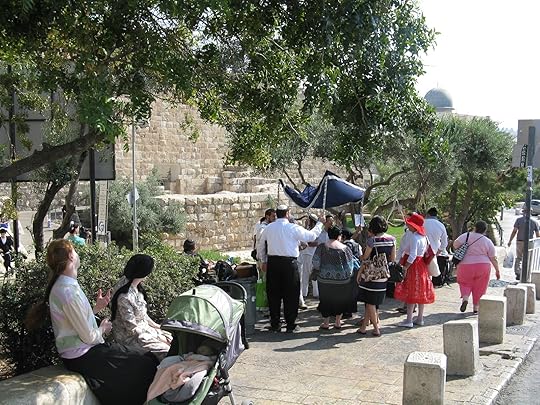 The Passover also forms the backdrop for a visit from Nicodemus and the feeding of the 5,000 at the Sea of Galilee. Elements of the Passover Seder (especially the order of service including prayers and songs which takes place around at the dinner table) show up in both New Testament teachings.Passover forms the basis for the Christian Communion (or Eucharist) service. The elements of bread and wine show up prominently in the Passover Seder. The Seder is outlined by four servings of wine associated with four promises given in Exodus 6:6-8. The stories of the Seder tell how salvation and redemption come to Israel beginning with the shedding of the blood of a lamb.
The Passover also forms the backdrop for a visit from Nicodemus and the feeding of the 5,000 at the Sea of Galilee. Elements of the Passover Seder (especially the order of service including prayers and songs which takes place around at the dinner table) show up in both New Testament teachings.Passover forms the basis for the Christian Communion (or Eucharist) service. The elements of bread and wine show up prominently in the Passover Seder. The Seder is outlined by four servings of wine associated with four promises given in Exodus 6:6-8. The stories of the Seder tell how salvation and redemption come to Israel beginning with the shedding of the blood of a lamb.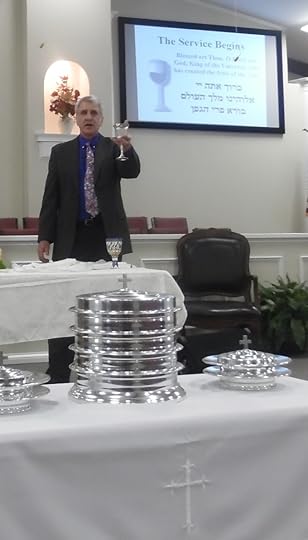 A celebration of Passover with your church will answer many confusing questions, such as, “Why is Easter, unlike other Christian holidays, celebrated on different days, and even in different months?” Passover explains the timing and organization of the Jewish calendar. The festival is held during the first month (of the religious year) which is set by design to help people understand when to plant crops. Passover is the spring planting and early harvest festival. The holiday teaches us to look to God as the provider of all good things such as creation, spring, freedom, families, and love.
A celebration of Passover with your church will answer many confusing questions, such as, “Why is Easter, unlike other Christian holidays, celebrated on different days, and even in different months?” Passover explains the timing and organization of the Jewish calendar. The festival is held during the first month (of the religious year) which is set by design to help people understand when to plant crops. Passover is the spring planting and early harvest festival. The holiday teaches us to look to God as the provider of all good things such as creation, spring, freedom, families, and love.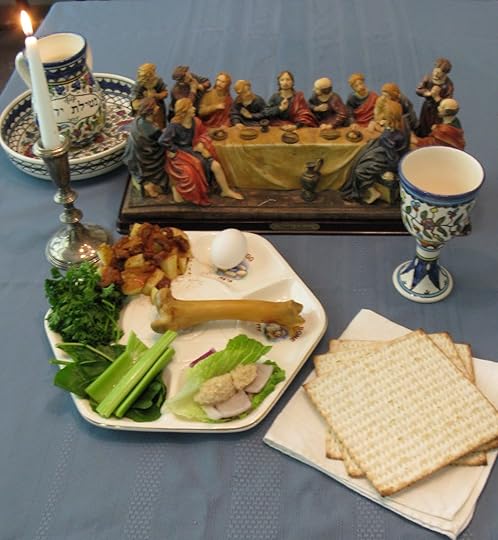 The Passover Seder (Seder means order, and includes prayers, songs, storytelling, questions, symbolic foods, and scripture - all taking place around the dinner table) is a family event. Inherent in its design, the gathering is held at home and not in the synagogue/church. The parents, not the pastor, are the teachers at this event. The family member leading speaks the words, “I do this because of what the Lord did for me when I came out of Egypt.” The leader goes on to teach his or her family, with whom he or she has a personal connection, “This observance will be for you like a sign on your hand and a reminder on your forehead that this law of the Lord is to be on your lips.” Passover is a home-based celebration of God’s love and providence for his people. The meal of remembrance has enabled the Jewish identity to survive for over 2,000 years without a homeland. Passover can be a great learning experience for Christian families and children.Many Christians object to a Passover Seder because, “We’ve never done that before!”However, these Christians are mistaken. The early church annually celebrated the Passover. An early church manual called the Didache explains that Christians met for a meal on the first day of every week, which was very similar to a Passover dinner. This meal is called the Love Feast in Luke 24:25-35; Acts 20:7, Jude 12, and Revelation 3:20. 1 Corinthians 11:17-34 gives a detailed teaching on the Agape Feast. Passover is a major theme throughout our Bible in both the Old and New Testaments. The teachings of this festival are fundamental to our faith. The environment and means in which the story of Passover is repeated demonstrates the teaching of history and faith for young children, solidifies and exemplifies these lessons for adults, and creates strength in the faith community. The Passover is a celebration worthy of our attention. Why has the church overlooked this important practice?
The Passover Seder (Seder means order, and includes prayers, songs, storytelling, questions, symbolic foods, and scripture - all taking place around the dinner table) is a family event. Inherent in its design, the gathering is held at home and not in the synagogue/church. The parents, not the pastor, are the teachers at this event. The family member leading speaks the words, “I do this because of what the Lord did for me when I came out of Egypt.” The leader goes on to teach his or her family, with whom he or she has a personal connection, “This observance will be for you like a sign on your hand and a reminder on your forehead that this law of the Lord is to be on your lips.” Passover is a home-based celebration of God’s love and providence for his people. The meal of remembrance has enabled the Jewish identity to survive for over 2,000 years without a homeland. Passover can be a great learning experience for Christian families and children.Many Christians object to a Passover Seder because, “We’ve never done that before!”However, these Christians are mistaken. The early church annually celebrated the Passover. An early church manual called the Didache explains that Christians met for a meal on the first day of every week, which was very similar to a Passover dinner. This meal is called the Love Feast in Luke 24:25-35; Acts 20:7, Jude 12, and Revelation 3:20. 1 Corinthians 11:17-34 gives a detailed teaching on the Agape Feast. Passover is a major theme throughout our Bible in both the Old and New Testaments. The teachings of this festival are fundamental to our faith. The environment and means in which the story of Passover is repeated demonstrates the teaching of history and faith for young children, solidifies and exemplifies these lessons for adults, and creates strength in the faith community. The Passover is a celebration worthy of our attention. Why has the church overlooked this important practice?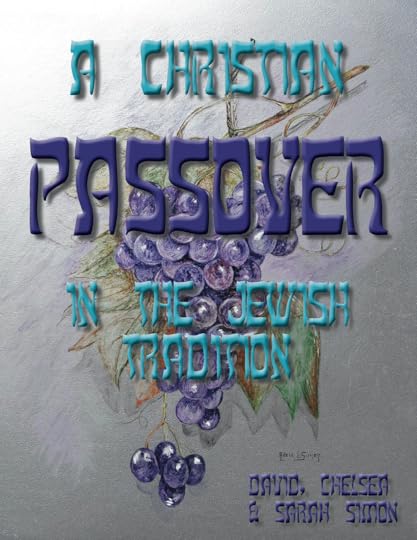 My family is available to lead a Passover Seder for your church (or to coach you to lead the meal). We regularly lead this service in North and South Carolina, New Orleans and the Cincinnati area. Contact us by leaving a comment on this blog.
My family is available to lead a Passover Seder for your church (or to coach you to lead the meal). We regularly lead this service in North and South Carolina, New Orleans and the Cincinnati area. Contact us by leaving a comment on this blog.
 BUT, some would say: “The Passover is an Old Testament celebration. The church is a New Testament organization.”Sadly, such conversation betrays a lack of understanding. The New Testament tells us that Jesus celebrated Passover annually. In my book Spring: Connecting with God, I give details of Passover from the life of Jesus that many have missed. Jesus and his parents visited Jerusalem for a Passover celebration when he was twelve years old. The context of this celebration explains how Joseph and Mary could leave Jerusalem without their son.
BUT, some would say: “The Passover is an Old Testament celebration. The church is a New Testament organization.”Sadly, such conversation betrays a lack of understanding. The New Testament tells us that Jesus celebrated Passover annually. In my book Spring: Connecting with God, I give details of Passover from the life of Jesus that many have missed. Jesus and his parents visited Jerusalem for a Passover celebration when he was twelve years old. The context of this celebration explains how Joseph and Mary could leave Jerusalem without their son. The Passover also forms the backdrop for a visit from Nicodemus and the feeding of the 5,000 at the Sea of Galilee. Elements of the Passover Seder (especially the order of service including prayers and songs which takes place around at the dinner table) show up in both New Testament teachings.Passover forms the basis for the Christian Communion (or Eucharist) service. The elements of bread and wine show up prominently in the Passover Seder. The Seder is outlined by four servings of wine associated with four promises given in Exodus 6:6-8. The stories of the Seder tell how salvation and redemption come to Israel beginning with the shedding of the blood of a lamb.
The Passover also forms the backdrop for a visit from Nicodemus and the feeding of the 5,000 at the Sea of Galilee. Elements of the Passover Seder (especially the order of service including prayers and songs which takes place around at the dinner table) show up in both New Testament teachings.Passover forms the basis for the Christian Communion (or Eucharist) service. The elements of bread and wine show up prominently in the Passover Seder. The Seder is outlined by four servings of wine associated with four promises given in Exodus 6:6-8. The stories of the Seder tell how salvation and redemption come to Israel beginning with the shedding of the blood of a lamb. A celebration of Passover with your church will answer many confusing questions, such as, “Why is Easter, unlike other Christian holidays, celebrated on different days, and even in different months?” Passover explains the timing and organization of the Jewish calendar. The festival is held during the first month (of the religious year) which is set by design to help people understand when to plant crops. Passover is the spring planting and early harvest festival. The holiday teaches us to look to God as the provider of all good things such as creation, spring, freedom, families, and love.
A celebration of Passover with your church will answer many confusing questions, such as, “Why is Easter, unlike other Christian holidays, celebrated on different days, and even in different months?” Passover explains the timing and organization of the Jewish calendar. The festival is held during the first month (of the religious year) which is set by design to help people understand when to plant crops. Passover is the spring planting and early harvest festival. The holiday teaches us to look to God as the provider of all good things such as creation, spring, freedom, families, and love. The Passover Seder (Seder means order, and includes prayers, songs, storytelling, questions, symbolic foods, and scripture - all taking place around the dinner table) is a family event. Inherent in its design, the gathering is held at home and not in the synagogue/church. The parents, not the pastor, are the teachers at this event. The family member leading speaks the words, “I do this because of what the Lord did for me when I came out of Egypt.” The leader goes on to teach his or her family, with whom he or she has a personal connection, “This observance will be for you like a sign on your hand and a reminder on your forehead that this law of the Lord is to be on your lips.” Passover is a home-based celebration of God’s love and providence for his people. The meal of remembrance has enabled the Jewish identity to survive for over 2,000 years without a homeland. Passover can be a great learning experience for Christian families and children.Many Christians object to a Passover Seder because, “We’ve never done that before!”However, these Christians are mistaken. The early church annually celebrated the Passover. An early church manual called the Didache explains that Christians met for a meal on the first day of every week, which was very similar to a Passover dinner. This meal is called the Love Feast in Luke 24:25-35; Acts 20:7, Jude 12, and Revelation 3:20. 1 Corinthians 11:17-34 gives a detailed teaching on the Agape Feast. Passover is a major theme throughout our Bible in both the Old and New Testaments. The teachings of this festival are fundamental to our faith. The environment and means in which the story of Passover is repeated demonstrates the teaching of history and faith for young children, solidifies and exemplifies these lessons for adults, and creates strength in the faith community. The Passover is a celebration worthy of our attention. Why has the church overlooked this important practice?
The Passover Seder (Seder means order, and includes prayers, songs, storytelling, questions, symbolic foods, and scripture - all taking place around the dinner table) is a family event. Inherent in its design, the gathering is held at home and not in the synagogue/church. The parents, not the pastor, are the teachers at this event. The family member leading speaks the words, “I do this because of what the Lord did for me when I came out of Egypt.” The leader goes on to teach his or her family, with whom he or she has a personal connection, “This observance will be for you like a sign on your hand and a reminder on your forehead that this law of the Lord is to be on your lips.” Passover is a home-based celebration of God’s love and providence for his people. The meal of remembrance has enabled the Jewish identity to survive for over 2,000 years without a homeland. Passover can be a great learning experience for Christian families and children.Many Christians object to a Passover Seder because, “We’ve never done that before!”However, these Christians are mistaken. The early church annually celebrated the Passover. An early church manual called the Didache explains that Christians met for a meal on the first day of every week, which was very similar to a Passover dinner. This meal is called the Love Feast in Luke 24:25-35; Acts 20:7, Jude 12, and Revelation 3:20. 1 Corinthians 11:17-34 gives a detailed teaching on the Agape Feast. Passover is a major theme throughout our Bible in both the Old and New Testaments. The teachings of this festival are fundamental to our faith. The environment and means in which the story of Passover is repeated demonstrates the teaching of history and faith for young children, solidifies and exemplifies these lessons for adults, and creates strength in the faith community. The Passover is a celebration worthy of our attention. Why has the church overlooked this important practice? My family is available to lead a Passover Seder for your church (or to coach you to lead the meal). We regularly lead this service in North and South Carolina, New Orleans and the Cincinnati area. Contact us by leaving a comment on this blog.
My family is available to lead a Passover Seder for your church (or to coach you to lead the meal). We regularly lead this service in North and South Carolina, New Orleans and the Cincinnati area. Contact us by leaving a comment on this blog.
Published on January 25, 2017 03:50
January 23, 2017
To Make America Great - Again!
This week a new era started, with a new President, new cabinet members, new governors, mayors and many other world and local leaders who have just come into possession of the position they desired. The era began with the chant, “Make America Great Again!” What does that mean?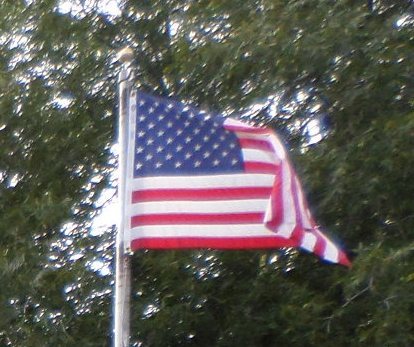 Our flag contains the story of our beginnings and expansionWe must first define America. America means the Western hemisphere of the world. It is made up of two continents with a connector and islands. America is named after Amerigo Vespucci. Our hemisphere is made up of many nations. The United States of America is one of the many nations, but there are others.
Our flag contains the story of our beginnings and expansionWe must first define America. America means the Western hemisphere of the world. It is made up of two continents with a connector and islands. America is named after Amerigo Vespucci. Our hemisphere is made up of many nations. The United States of America is one of the many nations, but there are others.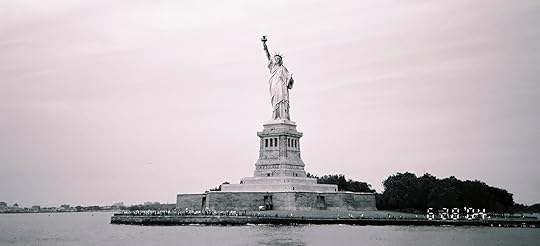 The Statue of Liberty welcomes immigrants from across the globeThe United Mexican States (Estados Únidos Mexicanos) is another nation which shares a border just to the south of the United States. The people of Mexico speak Spanish as do most of the other nations in America. Spanish is spoken by more people in our hemisphere and in the world than English. Many people in the eastern United States do not realize the rich Hispanic heritage of the southwestern region of our country which pre-dates both our independence and the incorporation of those states into the United States.To “Make America Great Again” repeats the theme of an earlier time in the United States when the America First Committee was formed so we would not get pulled into the conflict of the century across the ocean. The America First Committee was one of the largest anti-war organizations in American history claiming over 800,000 members including John F. Kennedy, Gerald Ford, Walt Disney, Sinclair Lewis, E. E. Cummings, Charles A. Lindbergh and many others.
The Statue of Liberty welcomes immigrants from across the globeThe United Mexican States (Estados Únidos Mexicanos) is another nation which shares a border just to the south of the United States. The people of Mexico speak Spanish as do most of the other nations in America. Spanish is spoken by more people in our hemisphere and in the world than English. Many people in the eastern United States do not realize the rich Hispanic heritage of the southwestern region of our country which pre-dates both our independence and the incorporation of those states into the United States.To “Make America Great Again” repeats the theme of an earlier time in the United States when the America First Committee was formed so we would not get pulled into the conflict of the century across the ocean. The America First Committee was one of the largest anti-war organizations in American history claiming over 800,000 members including John F. Kennedy, Gerald Ford, Walt Disney, Sinclair Lewis, E. E. Cummings, Charles A. Lindbergh and many others.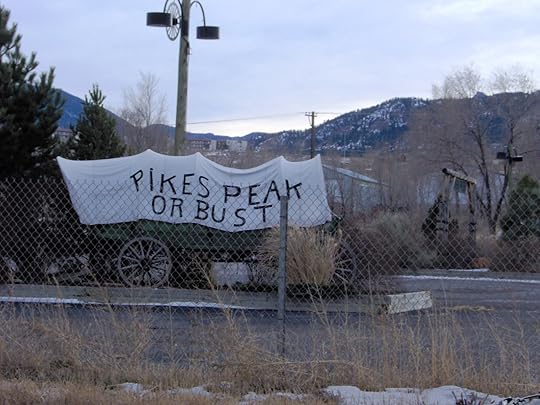 Our country is always growing and giving opportunity to allWhen most people hear the phrase “Make America Great Again” we think of a time in the past captured through the paintings of Norman Rockwell. Some of the paintings have titles like Freedom from want, Walking to Church, They Remembered, and Freedom from fear. These paintings remind us of an era where people belonged to a strong community. They talked to each other, ate picnics together, competed in sports and enjoyed public events.But this is not the America of today! The America of today is fragmented and fearful. We protect and insulate ourselves from others so we can exist in our own little world. We purchase security systems and guns because we fear. Some people put bars on their windows. And we talk of building a wall in south of Texas to keep American intruders out.
Our country is always growing and giving opportunity to allWhen most people hear the phrase “Make America Great Again” we think of a time in the past captured through the paintings of Norman Rockwell. Some of the paintings have titles like Freedom from want, Walking to Church, They Remembered, and Freedom from fear. These paintings remind us of an era where people belonged to a strong community. They talked to each other, ate picnics together, competed in sports and enjoyed public events.But this is not the America of today! The America of today is fragmented and fearful. We protect and insulate ourselves from others so we can exist in our own little world. We purchase security systems and guns because we fear. Some people put bars on their windows. And we talk of building a wall in south of Texas to keep American intruders out.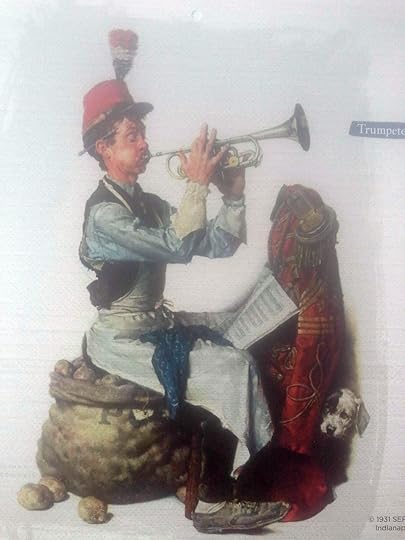 Norman Rockwell's "Trumpeter"One demographic of our society, the people most likely to say “Make America Great … Again” really harbors a desire to make themselves great … for a first time. It's like the dream of the lottery. The slogan could just as well say, “Make Me Greater than anyone else.” But this is not what made our country great.The United States of America becomes great when we realize we are in this together. We are a nation of many people and many races. What began as the land of indigenous people became a land of immigrants: Spanish, Portuguese, Dutch and English. The Scotch-Irish and Germans and Eastern Europeans joined the mix as did Vietnamese and Indians, Chinese and others. We are a land which celebrates our differences, and similarities.
Norman Rockwell's "Trumpeter"One demographic of our society, the people most likely to say “Make America Great … Again” really harbors a desire to make themselves great … for a first time. It's like the dream of the lottery. The slogan could just as well say, “Make Me Greater than anyone else.” But this is not what made our country great.The United States of America becomes great when we realize we are in this together. We are a nation of many people and many races. What began as the land of indigenous people became a land of immigrants: Spanish, Portuguese, Dutch and English. The Scotch-Irish and Germans and Eastern Europeans joined the mix as did Vietnamese and Indians, Chinese and others. We are a land which celebrates our differences, and similarities.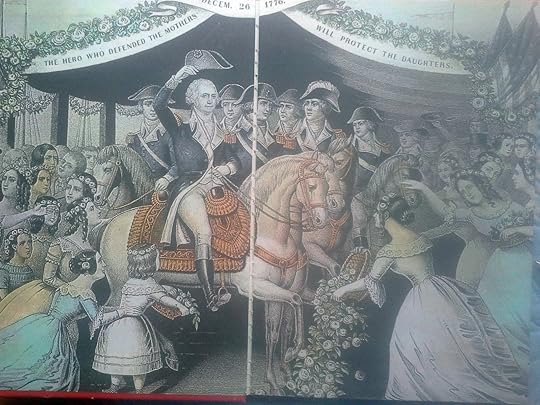 The United States opened doors to everyoneIn a great America the masses are productive and valued. Those who amass wealth understand their responsibility to contribute to the welfare of everyone. The rich understand and fully participate in targeted benevolence (not government handouts) in order to advance those for whom the American dream is out of reach. A great America is not a place where we protect our interests by finding tax loopholes. It is not a land which gives extravagant salaries to CEO’s. America is not the place where we take advantage of “cheap labor” south of the border or elsewhere. It is a land which gives appropriate rewards to those who work and watches out for the welfare of all (including those who can’t work).
The United States opened doors to everyoneIn a great America the masses are productive and valued. Those who amass wealth understand their responsibility to contribute to the welfare of everyone. The rich understand and fully participate in targeted benevolence (not government handouts) in order to advance those for whom the American dream is out of reach. A great America is not a place where we protect our interests by finding tax loopholes. It is not a land which gives extravagant salaries to CEO’s. America is not the place where we take advantage of “cheap labor” south of the border or elsewhere. It is a land which gives appropriate rewards to those who work and watches out for the welfare of all (including those who can’t work).
A great America is a place where we turn off our televisions, computers and cell phones in order to come together for community events like picnics, baseball games, concerts, cultural events and worship. A great America would be a place of high morals where the phrase “do unto others and you would have others do unto you” has meaning and reality. It is a place where we care about one another because we know one another and we like each other. It is a place where Republicans talk to Democrats and include Libertarians and others in the mix because we become great by sharing ideas across party lines and working together.
 Our flag contains the story of our beginnings and expansionWe must first define America. America means the Western hemisphere of the world. It is made up of two continents with a connector and islands. America is named after Amerigo Vespucci. Our hemisphere is made up of many nations. The United States of America is one of the many nations, but there are others.
Our flag contains the story of our beginnings and expansionWe must first define America. America means the Western hemisphere of the world. It is made up of two continents with a connector and islands. America is named after Amerigo Vespucci. Our hemisphere is made up of many nations. The United States of America is one of the many nations, but there are others. The Statue of Liberty welcomes immigrants from across the globeThe United Mexican States (Estados Únidos Mexicanos) is another nation which shares a border just to the south of the United States. The people of Mexico speak Spanish as do most of the other nations in America. Spanish is spoken by more people in our hemisphere and in the world than English. Many people in the eastern United States do not realize the rich Hispanic heritage of the southwestern region of our country which pre-dates both our independence and the incorporation of those states into the United States.To “Make America Great Again” repeats the theme of an earlier time in the United States when the America First Committee was formed so we would not get pulled into the conflict of the century across the ocean. The America First Committee was one of the largest anti-war organizations in American history claiming over 800,000 members including John F. Kennedy, Gerald Ford, Walt Disney, Sinclair Lewis, E. E. Cummings, Charles A. Lindbergh and many others.
The Statue of Liberty welcomes immigrants from across the globeThe United Mexican States (Estados Únidos Mexicanos) is another nation which shares a border just to the south of the United States. The people of Mexico speak Spanish as do most of the other nations in America. Spanish is spoken by more people in our hemisphere and in the world than English. Many people in the eastern United States do not realize the rich Hispanic heritage of the southwestern region of our country which pre-dates both our independence and the incorporation of those states into the United States.To “Make America Great Again” repeats the theme of an earlier time in the United States when the America First Committee was formed so we would not get pulled into the conflict of the century across the ocean. The America First Committee was one of the largest anti-war organizations in American history claiming over 800,000 members including John F. Kennedy, Gerald Ford, Walt Disney, Sinclair Lewis, E. E. Cummings, Charles A. Lindbergh and many others. Our country is always growing and giving opportunity to allWhen most people hear the phrase “Make America Great Again” we think of a time in the past captured through the paintings of Norman Rockwell. Some of the paintings have titles like Freedom from want, Walking to Church, They Remembered, and Freedom from fear. These paintings remind us of an era where people belonged to a strong community. They talked to each other, ate picnics together, competed in sports and enjoyed public events.But this is not the America of today! The America of today is fragmented and fearful. We protect and insulate ourselves from others so we can exist in our own little world. We purchase security systems and guns because we fear. Some people put bars on their windows. And we talk of building a wall in south of Texas to keep American intruders out.
Our country is always growing and giving opportunity to allWhen most people hear the phrase “Make America Great Again” we think of a time in the past captured through the paintings of Norman Rockwell. Some of the paintings have titles like Freedom from want, Walking to Church, They Remembered, and Freedom from fear. These paintings remind us of an era where people belonged to a strong community. They talked to each other, ate picnics together, competed in sports and enjoyed public events.But this is not the America of today! The America of today is fragmented and fearful. We protect and insulate ourselves from others so we can exist in our own little world. We purchase security systems and guns because we fear. Some people put bars on their windows. And we talk of building a wall in south of Texas to keep American intruders out. Norman Rockwell's "Trumpeter"One demographic of our society, the people most likely to say “Make America Great … Again” really harbors a desire to make themselves great … for a first time. It's like the dream of the lottery. The slogan could just as well say, “Make Me Greater than anyone else.” But this is not what made our country great.The United States of America becomes great when we realize we are in this together. We are a nation of many people and many races. What began as the land of indigenous people became a land of immigrants: Spanish, Portuguese, Dutch and English. The Scotch-Irish and Germans and Eastern Europeans joined the mix as did Vietnamese and Indians, Chinese and others. We are a land which celebrates our differences, and similarities.
Norman Rockwell's "Trumpeter"One demographic of our society, the people most likely to say “Make America Great … Again” really harbors a desire to make themselves great … for a first time. It's like the dream of the lottery. The slogan could just as well say, “Make Me Greater than anyone else.” But this is not what made our country great.The United States of America becomes great when we realize we are in this together. We are a nation of many people and many races. What began as the land of indigenous people became a land of immigrants: Spanish, Portuguese, Dutch and English. The Scotch-Irish and Germans and Eastern Europeans joined the mix as did Vietnamese and Indians, Chinese and others. We are a land which celebrates our differences, and similarities. The United States opened doors to everyoneIn a great America the masses are productive and valued. Those who amass wealth understand their responsibility to contribute to the welfare of everyone. The rich understand and fully participate in targeted benevolence (not government handouts) in order to advance those for whom the American dream is out of reach. A great America is not a place where we protect our interests by finding tax loopholes. It is not a land which gives extravagant salaries to CEO’s. America is not the place where we take advantage of “cheap labor” south of the border or elsewhere. It is a land which gives appropriate rewards to those who work and watches out for the welfare of all (including those who can’t work).
The United States opened doors to everyoneIn a great America the masses are productive and valued. Those who amass wealth understand their responsibility to contribute to the welfare of everyone. The rich understand and fully participate in targeted benevolence (not government handouts) in order to advance those for whom the American dream is out of reach. A great America is not a place where we protect our interests by finding tax loopholes. It is not a land which gives extravagant salaries to CEO’s. America is not the place where we take advantage of “cheap labor” south of the border or elsewhere. It is a land which gives appropriate rewards to those who work and watches out for the welfare of all (including those who can’t work). A great America is a place where we turn off our televisions, computers and cell phones in order to come together for community events like picnics, baseball games, concerts, cultural events and worship. A great America would be a place of high morals where the phrase “do unto others and you would have others do unto you” has meaning and reality. It is a place where we care about one another because we know one another and we like each other. It is a place where Republicans talk to Democrats and include Libertarians and others in the mix because we become great by sharing ideas across party lines and working together.
Published on January 23, 2017 08:24
January 20, 2017
Of Presidents and Royalty
Today the baton passes from Barack Hussein Obama to Donald John Trump. With the changing of the guard we will see differences in rhetoric, communication style and outward focus on the public side of Washington. Away from public view, because of the bureaucracy, some things will remain same.  Program near the steps of the Capitol in Washington, DCEight years ago I looked at the name of our President: Barack Hussein Obama. Barack is Hebrew for blessing (or lightning), Hussein is Arabic for a good or beautiful child. It is also a name for kings, such as the King of Jordan and former king of Iraq. Obama is a family name.
Program near the steps of the Capitol in Washington, DCEight years ago I looked at the name of our President: Barack Hussein Obama. Barack is Hebrew for blessing (or lightning), Hussein is Arabic for a good or beautiful child. It is also a name for kings, such as the King of Jordan and former king of Iraq. Obama is a family name.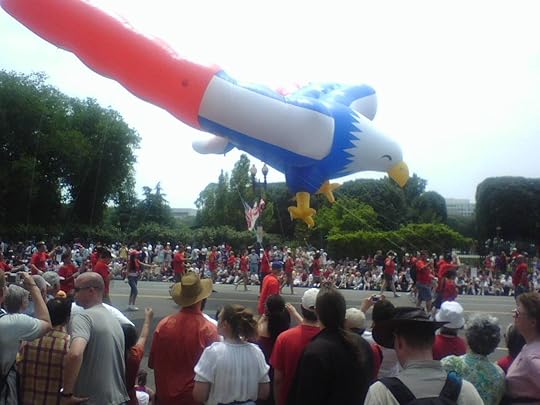 Parade in Washington, DCOur new President also has an interesting name, Donald John Trump. Donald from the Gaelic Domhnall means ruler of the world. John or Johannan comes from the Hebrew word (יוֹחָנָן) God has graced. Our new President’s last name is a shortened form of an occupational term, Trumpeter. This is appropriate because twittering can be seen as a different form of trumpeting.
Parade in Washington, DCOur new President also has an interesting name, Donald John Trump. Donald from the Gaelic Domhnall means ruler of the world. John or Johannan comes from the Hebrew word (יוֹחָנָן) God has graced. Our new President’s last name is a shortened form of an occupational term, Trumpeter. This is appropriate because twittering can be seen as a different form of trumpeting. 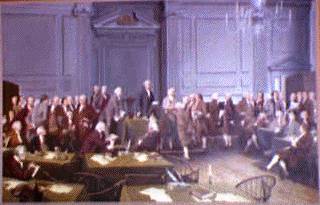 Constitution Hall in Philadelphia, PAToday in Washington D.C. we transition from the reign of “Blessed King Obama” to the ascendancy of the “Trumpeter who is by the grace of God a Ruler of the World.”
Constitution Hall in Philadelphia, PAToday in Washington D.C. we transition from the reign of “Blessed King Obama” to the ascendancy of the “Trumpeter who is by the grace of God a Ruler of the World.”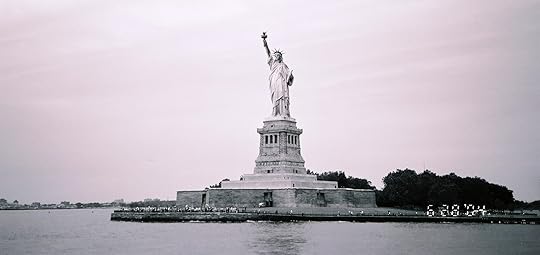 Statue of Liberty welcomes immigrants to the USASo, what will the administration of Donald John Trump look like? I borrow a line from Fiddler on the Roof, “I tell you, I don’t know.” For the time being I just observe. In four years we will know, and in fifty years historians will decide what “really” happened during Trump’s tenure.
Statue of Liberty welcomes immigrants to the USASo, what will the administration of Donald John Trump look like? I borrow a line from Fiddler on the Roof, “I tell you, I don’t know.” For the time being I just observe. In four years we will know, and in fifty years historians will decide what “really” happened during Trump’s tenure.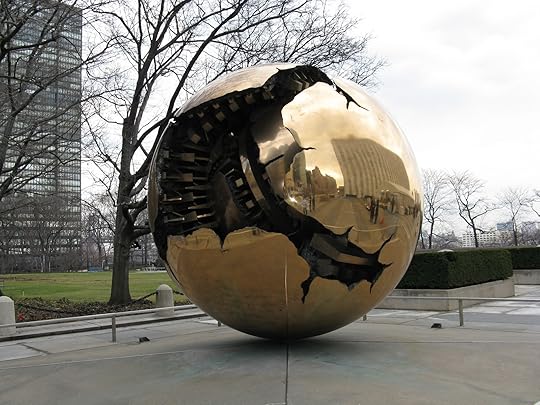 What a fractured world looks like from World Trade CenterOne thing we do know (and that we have already seen), promises will be broken. This is true of all Presidents. They can not be blamed, especially a man like Donald Trump, for he comes with no experience in government. And even if he had experience, there is no way to anticipate future events which will torment or bless his dynasty.
What a fractured world looks like from World Trade CenterOne thing we do know (and that we have already seen), promises will be broken. This is true of all Presidents. They can not be blamed, especially a man like Donald Trump, for he comes with no experience in government. And even if he had experience, there is no way to anticipate future events which will torment or bless his dynasty.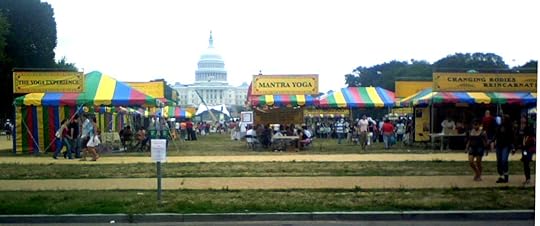 Festival on the Mall in Washington DCA second thing which our new President will discover is that the office of the President changes a person. Contrast the philosophies of Barack Obama eight years ago with what we see in him today, there is change. This can be said of any President. During each year of our President Trump’s sovereignty we will see changing strategy. And if his hairdresser does not mess with it, we will see the graying of the hair which comes with wisdom.
Festival on the Mall in Washington DCA second thing which our new President will discover is that the office of the President changes a person. Contrast the philosophies of Barack Obama eight years ago with what we see in him today, there is change. This can be said of any President. During each year of our President Trump’s sovereignty we will see changing strategy. And if his hairdresser does not mess with it, we will see the graying of the hair which comes with wisdom.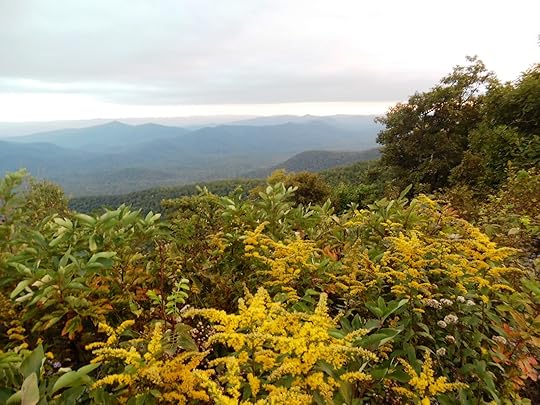 Changing of seasons in the mountainsMy prayer for our new President is that he will bring to pass the self-evident truth “that all men are created equal, that they are endowed by their Creator with certain unalienable Rights, that among these are Life, Liberty and the Pursuit of Happiness.” By this I mean that all people: Black, White or Brown; Christian, Islamic, Hindu, Buddhist, Jewish, Agnostic or Atheist; Rich or Poor, Democrat, Republican or Libertarian; Inner City, Suburban or Rural, will come to have value.
Changing of seasons in the mountainsMy prayer for our new President is that he will bring to pass the self-evident truth “that all men are created equal, that they are endowed by their Creator with certain unalienable Rights, that among these are Life, Liberty and the Pursuit of Happiness.” By this I mean that all people: Black, White or Brown; Christian, Islamic, Hindu, Buddhist, Jewish, Agnostic or Atheist; Rich or Poor, Democrat, Republican or Libertarian; Inner City, Suburban or Rural, will come to have value.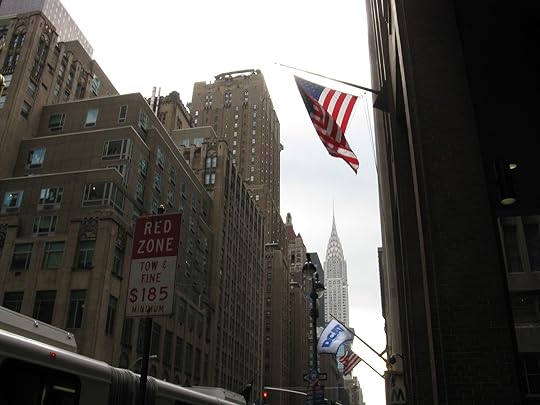 A street in New York CityThe scripture tells us, “When he takes the throne of his kingdom, he is to write for himself on a scroll a copy of this law, taken from that of the Levitical priests. It is to be with him, and he is to read it all the days of his life so that he may learn to revere the Lord his God and follow carefully all the words of this law and these decrees and not consider himself better than his fellow Israelites and turn from the law to the right or to the left. Then he and his descendants will reign a long time over his kingdom in Israel.” (Deuteronomy 17:18-20)The President should defend the cause of the fatherless and the widow, and love the foreigner residing among within our land. (Dt. 10:18) He should guard the common laborer and make sure they receive a fair wage “because they are poor and are counting on it.” Our bankruptcy laws should be overhauled to make sure workmen and small business owners are always paid for work performed. (Sorry about the rant but too many Christians have told me there was no problem with Donald Trump’s declaration of bankruptcies in order not to pay small businesses because the law allows it). “Otherwise they may cry to the LORD against you, and you will be guilty of sin.” (Dt. 24:15) The President (and all of his men) should not murder, commit adultery, steal, bear false testimony or send wrongful tweets. (Exodus 20)
A street in New York CityThe scripture tells us, “When he takes the throne of his kingdom, he is to write for himself on a scroll a copy of this law, taken from that of the Levitical priests. It is to be with him, and he is to read it all the days of his life so that he may learn to revere the Lord his God and follow carefully all the words of this law and these decrees and not consider himself better than his fellow Israelites and turn from the law to the right or to the left. Then he and his descendants will reign a long time over his kingdom in Israel.” (Deuteronomy 17:18-20)The President should defend the cause of the fatherless and the widow, and love the foreigner residing among within our land. (Dt. 10:18) He should guard the common laborer and make sure they receive a fair wage “because they are poor and are counting on it.” Our bankruptcy laws should be overhauled to make sure workmen and small business owners are always paid for work performed. (Sorry about the rant but too many Christians have told me there was no problem with Donald Trump’s declaration of bankruptcies in order not to pay small businesses because the law allows it). “Otherwise they may cry to the LORD against you, and you will be guilty of sin.” (Dt. 24:15) The President (and all of his men) should not murder, commit adultery, steal, bear false testimony or send wrongful tweets. (Exodus 20)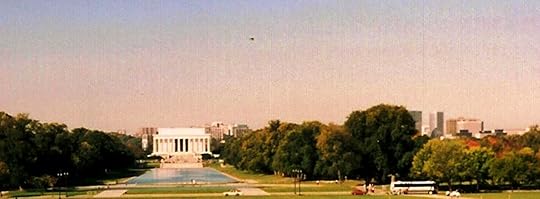 Lincoln Monument and Reflecting Pool in Washington DCWe are to “be subject to the governing authorities” (Romans 13:1) and submit to the king as the supreme authority.” (1 Peter 2:13) Paul wrote, “that petitions, prayers, intercession and thanksgiving be made for all people--for kings and all those in authority, that we may live peaceful and quiet lives in all godliness and holiness.” (1 Timothy 2:1-2)
Lincoln Monument and Reflecting Pool in Washington DCWe are to “be subject to the governing authorities” (Romans 13:1) and submit to the king as the supreme authority.” (1 Peter 2:13) Paul wrote, “that petitions, prayers, intercession and thanksgiving be made for all people--for kings and all those in authority, that we may live peaceful and quiet lives in all godliness and holiness.” (1 Timothy 2:1-2)
Many approach the next four years with great hope. Others move forward in great trepidation. I pray that in the end we will find unity, prosperity and peace.
 Program near the steps of the Capitol in Washington, DCEight years ago I looked at the name of our President: Barack Hussein Obama. Barack is Hebrew for blessing (or lightning), Hussein is Arabic for a good or beautiful child. It is also a name for kings, such as the King of Jordan and former king of Iraq. Obama is a family name.
Program near the steps of the Capitol in Washington, DCEight years ago I looked at the name of our President: Barack Hussein Obama. Barack is Hebrew for blessing (or lightning), Hussein is Arabic for a good or beautiful child. It is also a name for kings, such as the King of Jordan and former king of Iraq. Obama is a family name. Parade in Washington, DCOur new President also has an interesting name, Donald John Trump. Donald from the Gaelic Domhnall means ruler of the world. John or Johannan comes from the Hebrew word (יוֹחָנָן) God has graced. Our new President’s last name is a shortened form of an occupational term, Trumpeter. This is appropriate because twittering can be seen as a different form of trumpeting.
Parade in Washington, DCOur new President also has an interesting name, Donald John Trump. Donald from the Gaelic Domhnall means ruler of the world. John or Johannan comes from the Hebrew word (יוֹחָנָן) God has graced. Our new President’s last name is a shortened form of an occupational term, Trumpeter. This is appropriate because twittering can be seen as a different form of trumpeting.  Constitution Hall in Philadelphia, PAToday in Washington D.C. we transition from the reign of “Blessed King Obama” to the ascendancy of the “Trumpeter who is by the grace of God a Ruler of the World.”
Constitution Hall in Philadelphia, PAToday in Washington D.C. we transition from the reign of “Blessed King Obama” to the ascendancy of the “Trumpeter who is by the grace of God a Ruler of the World.” Statue of Liberty welcomes immigrants to the USASo, what will the administration of Donald John Trump look like? I borrow a line from Fiddler on the Roof, “I tell you, I don’t know.” For the time being I just observe. In four years we will know, and in fifty years historians will decide what “really” happened during Trump’s tenure.
Statue of Liberty welcomes immigrants to the USASo, what will the administration of Donald John Trump look like? I borrow a line from Fiddler on the Roof, “I tell you, I don’t know.” For the time being I just observe. In four years we will know, and in fifty years historians will decide what “really” happened during Trump’s tenure. What a fractured world looks like from World Trade CenterOne thing we do know (and that we have already seen), promises will be broken. This is true of all Presidents. They can not be blamed, especially a man like Donald Trump, for he comes with no experience in government. And even if he had experience, there is no way to anticipate future events which will torment or bless his dynasty.
What a fractured world looks like from World Trade CenterOne thing we do know (and that we have already seen), promises will be broken. This is true of all Presidents. They can not be blamed, especially a man like Donald Trump, for he comes with no experience in government. And even if he had experience, there is no way to anticipate future events which will torment or bless his dynasty. Festival on the Mall in Washington DCA second thing which our new President will discover is that the office of the President changes a person. Contrast the philosophies of Barack Obama eight years ago with what we see in him today, there is change. This can be said of any President. During each year of our President Trump’s sovereignty we will see changing strategy. And if his hairdresser does not mess with it, we will see the graying of the hair which comes with wisdom.
Festival on the Mall in Washington DCA second thing which our new President will discover is that the office of the President changes a person. Contrast the philosophies of Barack Obama eight years ago with what we see in him today, there is change. This can be said of any President. During each year of our President Trump’s sovereignty we will see changing strategy. And if his hairdresser does not mess with it, we will see the graying of the hair which comes with wisdom. Changing of seasons in the mountainsMy prayer for our new President is that he will bring to pass the self-evident truth “that all men are created equal, that they are endowed by their Creator with certain unalienable Rights, that among these are Life, Liberty and the Pursuit of Happiness.” By this I mean that all people: Black, White or Brown; Christian, Islamic, Hindu, Buddhist, Jewish, Agnostic or Atheist; Rich or Poor, Democrat, Republican or Libertarian; Inner City, Suburban or Rural, will come to have value.
Changing of seasons in the mountainsMy prayer for our new President is that he will bring to pass the self-evident truth “that all men are created equal, that they are endowed by their Creator with certain unalienable Rights, that among these are Life, Liberty and the Pursuit of Happiness.” By this I mean that all people: Black, White or Brown; Christian, Islamic, Hindu, Buddhist, Jewish, Agnostic or Atheist; Rich or Poor, Democrat, Republican or Libertarian; Inner City, Suburban or Rural, will come to have value. A street in New York CityThe scripture tells us, “When he takes the throne of his kingdom, he is to write for himself on a scroll a copy of this law, taken from that of the Levitical priests. It is to be with him, and he is to read it all the days of his life so that he may learn to revere the Lord his God and follow carefully all the words of this law and these decrees and not consider himself better than his fellow Israelites and turn from the law to the right or to the left. Then he and his descendants will reign a long time over his kingdom in Israel.” (Deuteronomy 17:18-20)The President should defend the cause of the fatherless and the widow, and love the foreigner residing among within our land. (Dt. 10:18) He should guard the common laborer and make sure they receive a fair wage “because they are poor and are counting on it.” Our bankruptcy laws should be overhauled to make sure workmen and small business owners are always paid for work performed. (Sorry about the rant but too many Christians have told me there was no problem with Donald Trump’s declaration of bankruptcies in order not to pay small businesses because the law allows it). “Otherwise they may cry to the LORD against you, and you will be guilty of sin.” (Dt. 24:15) The President (and all of his men) should not murder, commit adultery, steal, bear false testimony or send wrongful tweets. (Exodus 20)
A street in New York CityThe scripture tells us, “When he takes the throne of his kingdom, he is to write for himself on a scroll a copy of this law, taken from that of the Levitical priests. It is to be with him, and he is to read it all the days of his life so that he may learn to revere the Lord his God and follow carefully all the words of this law and these decrees and not consider himself better than his fellow Israelites and turn from the law to the right or to the left. Then he and his descendants will reign a long time over his kingdom in Israel.” (Deuteronomy 17:18-20)The President should defend the cause of the fatherless and the widow, and love the foreigner residing among within our land. (Dt. 10:18) He should guard the common laborer and make sure they receive a fair wage “because they are poor and are counting on it.” Our bankruptcy laws should be overhauled to make sure workmen and small business owners are always paid for work performed. (Sorry about the rant but too many Christians have told me there was no problem with Donald Trump’s declaration of bankruptcies in order not to pay small businesses because the law allows it). “Otherwise they may cry to the LORD against you, and you will be guilty of sin.” (Dt. 24:15) The President (and all of his men) should not murder, commit adultery, steal, bear false testimony or send wrongful tweets. (Exodus 20) Lincoln Monument and Reflecting Pool in Washington DCWe are to “be subject to the governing authorities” (Romans 13:1) and submit to the king as the supreme authority.” (1 Peter 2:13) Paul wrote, “that petitions, prayers, intercession and thanksgiving be made for all people--for kings and all those in authority, that we may live peaceful and quiet lives in all godliness and holiness.” (1 Timothy 2:1-2)
Lincoln Monument and Reflecting Pool in Washington DCWe are to “be subject to the governing authorities” (Romans 13:1) and submit to the king as the supreme authority.” (1 Peter 2:13) Paul wrote, “that petitions, prayers, intercession and thanksgiving be made for all people--for kings and all those in authority, that we may live peaceful and quiet lives in all godliness and holiness.” (1 Timothy 2:1-2)Many approach the next four years with great hope. Others move forward in great trepidation. I pray that in the end we will find unity, prosperity and peace.
Published on January 20, 2017 03:30
January 18, 2017
Israel Discoveries and a Fantastic Journey
I am pleased to invite you to join me on a 14 day trip to the Holy Land. I will be writing about different places we will visit over the next year on this blog (at least once a week). I do want you to join me on this trip to see Israel, meet the people, see the sites and hear the Bible stories. To see the full agenda or to sign up, click the links. You will be rewarded through personal discoveries and experiences by going on this journey.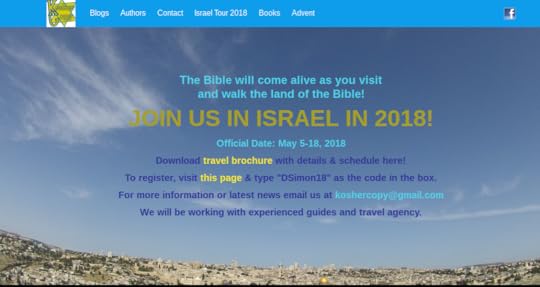 Visit our website www.KosherCopy.com for detailsOur trip to Israel will be comprehensive. We will journey throughout the land and visit each region. You will discover differences in terrain and how lives of people in the Bible were impacted by where they lived, the places they traveled and through the people they met.
Visit our website www.KosherCopy.com for detailsOur trip to Israel will be comprehensive. We will journey throughout the land and visit each region. You will discover differences in terrain and how lives of people in the Bible were impacted by where they lived, the places they traveled and through the people they met.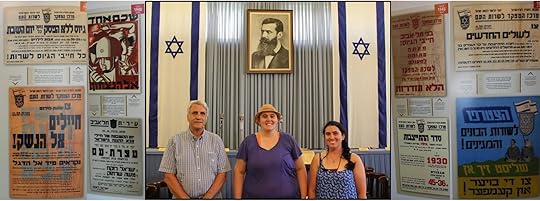 Visit Independence Hall and Hagannah Museum in Tel AvivFrom the very first day of our trip you will be immersed in both the present and the past of Israel. We will visit the Palmach Museum where we will experience the lives and stories of men and women who fought for Israel’s independence. We will also visit the home where the original Declaration of Independence was read and accepted. We will also visit the port from which Jonah departed and the home where it is said Peter received his vision to share the Gospel with Gentiles. We will point out how the stories of Israel’s recent past have brought about a great sense of patriotism and love for “Eretz Yisrael.”
Visit Independence Hall and Hagannah Museum in Tel AvivFrom the very first day of our trip you will be immersed in both the present and the past of Israel. We will visit the Palmach Museum where we will experience the lives and stories of men and women who fought for Israel’s independence. We will also visit the home where the original Declaration of Independence was read and accepted. We will also visit the port from which Jonah departed and the home where it is said Peter received his vision to share the Gospel with Gentiles. We will point out how the stories of Israel’s recent past have brought about a great sense of patriotism and love for “Eretz Yisrael.”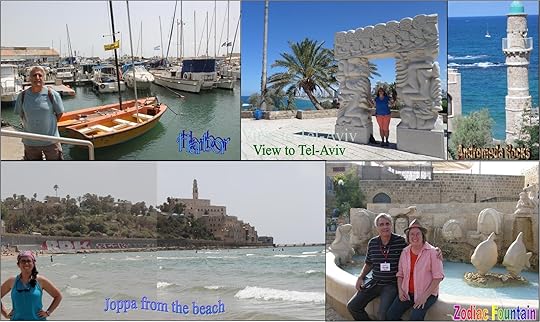 Enjoy beautiful JoppaAlong the journey we will visit the Shephelah, a region where many conflicts occurred. We will see where David fought Goliath, where Samson slew the Philistines and the place where Sennacherib and Nebuchadnezzar assembled to launch an offensive against Jerusalem. We will travel this region on the bus and by foot in order to discover how geography played a key role in where battles of the scripture and wars of recent times were fought. We will explore hilltop protective fortresses as well as underground hideouts.
Enjoy beautiful JoppaAlong the journey we will visit the Shephelah, a region where many conflicts occurred. We will see where David fought Goliath, where Samson slew the Philistines and the place where Sennacherib and Nebuchadnezzar assembled to launch an offensive against Jerusalem. We will travel this region on the bus and by foot in order to discover how geography played a key role in where battles of the scripture and wars of recent times were fought. We will explore hilltop protective fortresses as well as underground hideouts.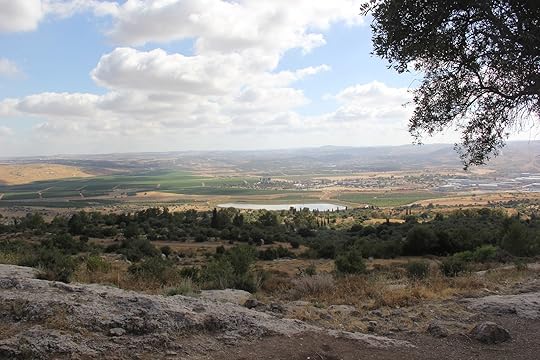 Modi'in from Canada Park, IsraelOur trip to Israel will take us into the Negev and the desert. Here we will walk where Abraham, Isaac and Jacob lived and worked. We will see where they drew water and we will experience their way of life. We will even ride camels. While in the south we will visit the Wilderness of Zin and traverse the valley where Israel camped while under Moses’ leadership. We will sleep in the wilderness (in upgraded accommodations, of course) and see the same stars and constellations observed by the Patriarchs.
Modi'in from Canada Park, IsraelOur trip to Israel will take us into the Negev and the desert. Here we will walk where Abraham, Isaac and Jacob lived and worked. We will see where they drew water and we will experience their way of life. We will even ride camels. While in the south we will visit the Wilderness of Zin and traverse the valley where Israel camped while under Moses’ leadership. We will sleep in the wilderness (in upgraded accommodations, of course) and see the same stars and constellations observed by the Patriarchs.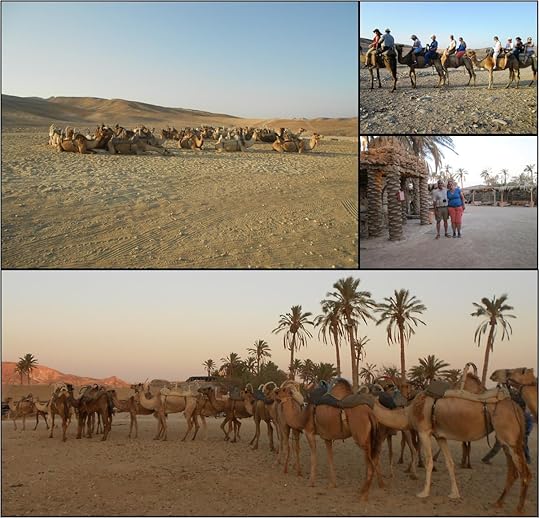 Ride Camels in the desertWe will experience in the lofty views from Masada and what life is like at the lowest spot on the surface of the earth. We will discover the caves in which David hid and we will climb into the caves where the scrolls of Qumran (Dead Sea Scrolls) were hidden.
Ride Camels in the desertWe will experience in the lofty views from Masada and what life is like at the lowest spot on the surface of the earth. We will discover the caves in which David hid and we will climb into the caves where the scrolls of Qumran (Dead Sea Scrolls) were hidden.
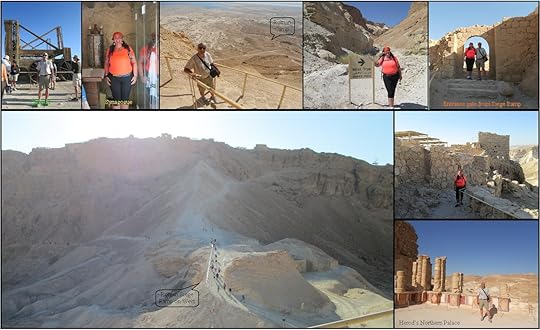 Climb Masada and see the fantastic view!
Climb Masada and see the fantastic view!
We will float on the Dead Sea, dip our feet in the clear water of Ein Gedi and experience baptism in the Jordan river. We will touch the very stones which fell to the ground when the army of Joshua blew their trumpets at Jericho.
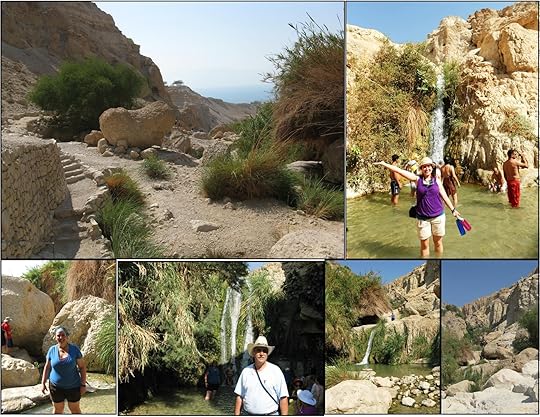 Take a cool swim like King David at EnGediWe will visit together places I have written about in my books (Advent Journeys and Spring), but have never seen. Our bus will take us past Ramah, Mitzpah and Bethel to Shiloh. We will see the place where Samuel served in the Tabernacle and also the hills of Samaria. We will discover the landscape of the hill country and how it afforded ancient Israel protection.
Take a cool swim like King David at EnGediWe will visit together places I have written about in my books (Advent Journeys and Spring), but have never seen. Our bus will take us past Ramah, Mitzpah and Bethel to Shiloh. We will see the place where Samuel served in the Tabernacle and also the hills of Samaria. We will discover the landscape of the hill country and how it afforded ancient Israel protection.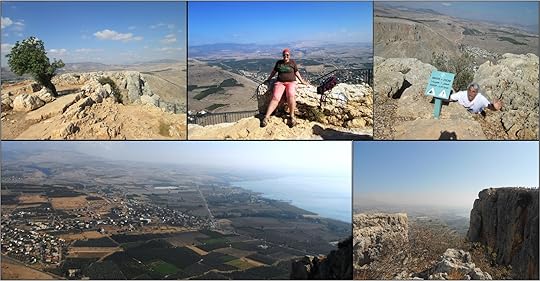 See where Jesus walked from the top of Mount ArbelIn Israel we will walk the land where Jesus walked (including Nazareth, Capernaum and Magdala), climb the mountains he climbed (including Mt. Arbel and the Precipice) and sail on the Sea of Galilee. We will visit Synagogues where Jesus preached and we will see the home where it is said Peter lived. We will read the Beatitudes from the place it is thought to have been delivered and retell the story of how Jesus fed 5,000 people from two fish and five loaves of bread.
See where Jesus walked from the top of Mount ArbelIn Israel we will walk the land where Jesus walked (including Nazareth, Capernaum and Magdala), climb the mountains he climbed (including Mt. Arbel and the Precipice) and sail on the Sea of Galilee. We will visit Synagogues where Jesus preached and we will see the home where it is said Peter lived. We will read the Beatitudes from the place it is thought to have been delivered and retell the story of how Jesus fed 5,000 people from two fish and five loaves of bread.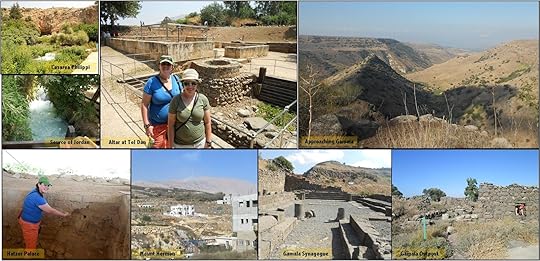 History lives through archaeological findsOur journey will take us to the northernmost extremes of the land of Israel. We will walk atop the Golan Heights, drive along (and walk under) the Damascus Road, look into Lebanon and see Mount Hermon. We will view two of the sources of the Jordan River and discover why Jesus said, “on this rock I will build my church, and the gates of Hades will not overcome it.”
History lives through archaeological findsOur journey will take us to the northernmost extremes of the land of Israel. We will walk atop the Golan Heights, drive along (and walk under) the Damascus Road, look into Lebanon and see Mount Hermon. We will view two of the sources of the Jordan River and discover why Jesus said, “on this rock I will build my church, and the gates of Hades will not overcome it.”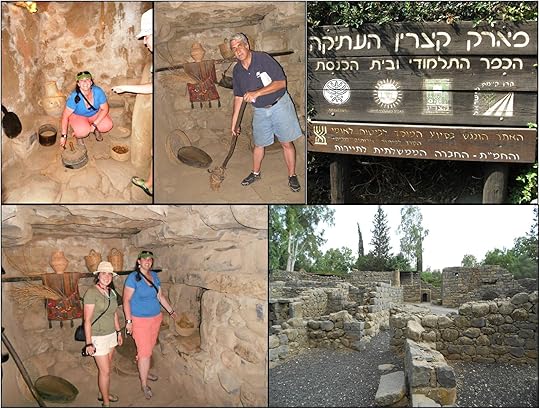 See and experience life as it was in ancient GalileeWe will discover what life was like in a normal Jewish home by walking into houses dating back to Talmudic times. We will see how people cooked, where they slept and how they maintained their homes. We will hear about the crops they grew and view their modes of transportation. We will come to understand a great deal more about how people lived life in Bible times.
See and experience life as it was in ancient GalileeWe will discover what life was like in a normal Jewish home by walking into houses dating back to Talmudic times. We will see how people cooked, where they slept and how they maintained their homes. We will hear about the crops they grew and view their modes of transportation. We will come to understand a great deal more about how people lived life in Bible times.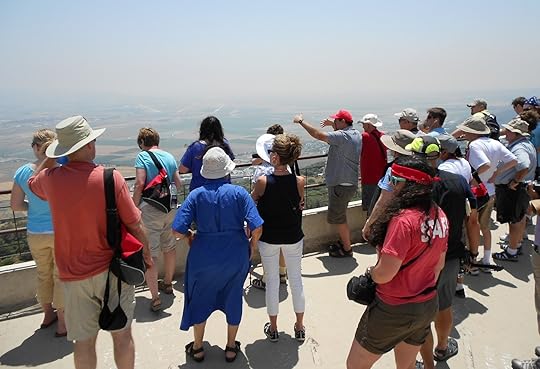 See the Jezreel Valley on this unforgettable tripOur journey through Israel will take us through the highlands of Galilee, across the Jezreel Valley and up the slopes of Mt. Carmel. We will see Megiddo and the arena at Caesarea where the Apostle Paul was tried. We will walk under the Roman Aqueducts and see King Herod’s swimming pool. We will traverse the Plain of Sharon and climb Beit Horon ascent past Modi’in.
See the Jezreel Valley on this unforgettable tripOur journey through Israel will take us through the highlands of Galilee, across the Jezreel Valley and up the slopes of Mt. Carmel. We will see Megiddo and the arena at Caesarea where the Apostle Paul was tried. We will walk under the Roman Aqueducts and see King Herod’s swimming pool. We will traverse the Plain of Sharon and climb Beit Horon ascent past Modi’in.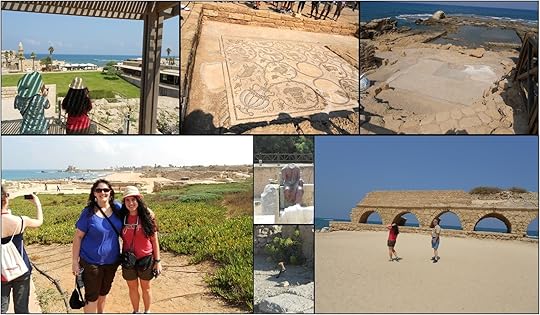 Visit Caesarea, IsraelOur visit to Israel will let us live in Jerusalem for four nights. We will walk through the walled city. We will touch the Western Wall, walk along the ramparts, shop in the markets, eat the foods, take in the aromas and experience the pace of life among Jews, Arabs and Christians. We will discover Jerusalem from the top of the Mount of Olives to the bottom of Kidron Valley. We will visit Temple Mount, walk through the water in Hezekiah’s Tunnel, and make entry through many of the historic gates.
Visit Caesarea, IsraelOur visit to Israel will let us live in Jerusalem for four nights. We will walk through the walled city. We will touch the Western Wall, walk along the ramparts, shop in the markets, eat the foods, take in the aromas and experience the pace of life among Jews, Arabs and Christians. We will discover Jerusalem from the top of the Mount of Olives to the bottom of Kidron Valley. We will visit Temple Mount, walk through the water in Hezekiah’s Tunnel, and make entry through many of the historic gates.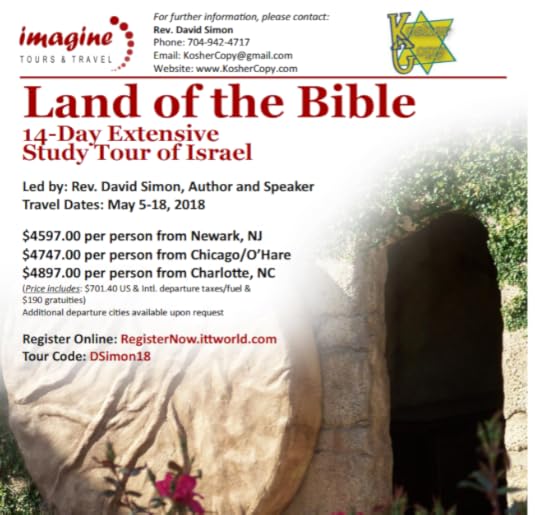 Take a look at the itinerary
Take a look at the itinerary
What will we discover in Israel? More than this blog can contain! I invite you to join me on a 14 day trip to the land of Promise. Each day will be filled with sights, sounds and taste. And you will make discoveries which will stay with you for a lifetime.
 Visit our website www.KosherCopy.com for detailsOur trip to Israel will be comprehensive. We will journey throughout the land and visit each region. You will discover differences in terrain and how lives of people in the Bible were impacted by where they lived, the places they traveled and through the people they met.
Visit our website www.KosherCopy.com for detailsOur trip to Israel will be comprehensive. We will journey throughout the land and visit each region. You will discover differences in terrain and how lives of people in the Bible were impacted by where they lived, the places they traveled and through the people they met. Visit Independence Hall and Hagannah Museum in Tel AvivFrom the very first day of our trip you will be immersed in both the present and the past of Israel. We will visit the Palmach Museum where we will experience the lives and stories of men and women who fought for Israel’s independence. We will also visit the home where the original Declaration of Independence was read and accepted. We will also visit the port from which Jonah departed and the home where it is said Peter received his vision to share the Gospel with Gentiles. We will point out how the stories of Israel’s recent past have brought about a great sense of patriotism and love for “Eretz Yisrael.”
Visit Independence Hall and Hagannah Museum in Tel AvivFrom the very first day of our trip you will be immersed in both the present and the past of Israel. We will visit the Palmach Museum where we will experience the lives and stories of men and women who fought for Israel’s independence. We will also visit the home where the original Declaration of Independence was read and accepted. We will also visit the port from which Jonah departed and the home where it is said Peter received his vision to share the Gospel with Gentiles. We will point out how the stories of Israel’s recent past have brought about a great sense of patriotism and love for “Eretz Yisrael.” Enjoy beautiful JoppaAlong the journey we will visit the Shephelah, a region where many conflicts occurred. We will see where David fought Goliath, where Samson slew the Philistines and the place where Sennacherib and Nebuchadnezzar assembled to launch an offensive against Jerusalem. We will travel this region on the bus and by foot in order to discover how geography played a key role in where battles of the scripture and wars of recent times were fought. We will explore hilltop protective fortresses as well as underground hideouts.
Enjoy beautiful JoppaAlong the journey we will visit the Shephelah, a region where many conflicts occurred. We will see where David fought Goliath, where Samson slew the Philistines and the place where Sennacherib and Nebuchadnezzar assembled to launch an offensive against Jerusalem. We will travel this region on the bus and by foot in order to discover how geography played a key role in where battles of the scripture and wars of recent times were fought. We will explore hilltop protective fortresses as well as underground hideouts. Modi'in from Canada Park, IsraelOur trip to Israel will take us into the Negev and the desert. Here we will walk where Abraham, Isaac and Jacob lived and worked. We will see where they drew water and we will experience their way of life. We will even ride camels. While in the south we will visit the Wilderness of Zin and traverse the valley where Israel camped while under Moses’ leadership. We will sleep in the wilderness (in upgraded accommodations, of course) and see the same stars and constellations observed by the Patriarchs.
Modi'in from Canada Park, IsraelOur trip to Israel will take us into the Negev and the desert. Here we will walk where Abraham, Isaac and Jacob lived and worked. We will see where they drew water and we will experience their way of life. We will even ride camels. While in the south we will visit the Wilderness of Zin and traverse the valley where Israel camped while under Moses’ leadership. We will sleep in the wilderness (in upgraded accommodations, of course) and see the same stars and constellations observed by the Patriarchs. Ride Camels in the desertWe will experience in the lofty views from Masada and what life is like at the lowest spot on the surface of the earth. We will discover the caves in which David hid and we will climb into the caves where the scrolls of Qumran (Dead Sea Scrolls) were hidden.
Ride Camels in the desertWe will experience in the lofty views from Masada and what life is like at the lowest spot on the surface of the earth. We will discover the caves in which David hid and we will climb into the caves where the scrolls of Qumran (Dead Sea Scrolls) were hidden.  Climb Masada and see the fantastic view!
Climb Masada and see the fantastic view!We will float on the Dead Sea, dip our feet in the clear water of Ein Gedi and experience baptism in the Jordan river. We will touch the very stones which fell to the ground when the army of Joshua blew their trumpets at Jericho.
 Take a cool swim like King David at EnGediWe will visit together places I have written about in my books (Advent Journeys and Spring), but have never seen. Our bus will take us past Ramah, Mitzpah and Bethel to Shiloh. We will see the place where Samuel served in the Tabernacle and also the hills of Samaria. We will discover the landscape of the hill country and how it afforded ancient Israel protection.
Take a cool swim like King David at EnGediWe will visit together places I have written about in my books (Advent Journeys and Spring), but have never seen. Our bus will take us past Ramah, Mitzpah and Bethel to Shiloh. We will see the place where Samuel served in the Tabernacle and also the hills of Samaria. We will discover the landscape of the hill country and how it afforded ancient Israel protection. See where Jesus walked from the top of Mount ArbelIn Israel we will walk the land where Jesus walked (including Nazareth, Capernaum and Magdala), climb the mountains he climbed (including Mt. Arbel and the Precipice) and sail on the Sea of Galilee. We will visit Synagogues where Jesus preached and we will see the home where it is said Peter lived. We will read the Beatitudes from the place it is thought to have been delivered and retell the story of how Jesus fed 5,000 people from two fish and five loaves of bread.
See where Jesus walked from the top of Mount ArbelIn Israel we will walk the land where Jesus walked (including Nazareth, Capernaum and Magdala), climb the mountains he climbed (including Mt. Arbel and the Precipice) and sail on the Sea of Galilee. We will visit Synagogues where Jesus preached and we will see the home where it is said Peter lived. We will read the Beatitudes from the place it is thought to have been delivered and retell the story of how Jesus fed 5,000 people from two fish and five loaves of bread. History lives through archaeological findsOur journey will take us to the northernmost extremes of the land of Israel. We will walk atop the Golan Heights, drive along (and walk under) the Damascus Road, look into Lebanon and see Mount Hermon. We will view two of the sources of the Jordan River and discover why Jesus said, “on this rock I will build my church, and the gates of Hades will not overcome it.”
History lives through archaeological findsOur journey will take us to the northernmost extremes of the land of Israel. We will walk atop the Golan Heights, drive along (and walk under) the Damascus Road, look into Lebanon and see Mount Hermon. We will view two of the sources of the Jordan River and discover why Jesus said, “on this rock I will build my church, and the gates of Hades will not overcome it.” See and experience life as it was in ancient GalileeWe will discover what life was like in a normal Jewish home by walking into houses dating back to Talmudic times. We will see how people cooked, where they slept and how they maintained their homes. We will hear about the crops they grew and view their modes of transportation. We will come to understand a great deal more about how people lived life in Bible times.
See and experience life as it was in ancient GalileeWe will discover what life was like in a normal Jewish home by walking into houses dating back to Talmudic times. We will see how people cooked, where they slept and how they maintained their homes. We will hear about the crops they grew and view their modes of transportation. We will come to understand a great deal more about how people lived life in Bible times. See the Jezreel Valley on this unforgettable tripOur journey through Israel will take us through the highlands of Galilee, across the Jezreel Valley and up the slopes of Mt. Carmel. We will see Megiddo and the arena at Caesarea where the Apostle Paul was tried. We will walk under the Roman Aqueducts and see King Herod’s swimming pool. We will traverse the Plain of Sharon and climb Beit Horon ascent past Modi’in.
See the Jezreel Valley on this unforgettable tripOur journey through Israel will take us through the highlands of Galilee, across the Jezreel Valley and up the slopes of Mt. Carmel. We will see Megiddo and the arena at Caesarea where the Apostle Paul was tried. We will walk under the Roman Aqueducts and see King Herod’s swimming pool. We will traverse the Plain of Sharon and climb Beit Horon ascent past Modi’in. Visit Caesarea, IsraelOur visit to Israel will let us live in Jerusalem for four nights. We will walk through the walled city. We will touch the Western Wall, walk along the ramparts, shop in the markets, eat the foods, take in the aromas and experience the pace of life among Jews, Arabs and Christians. We will discover Jerusalem from the top of the Mount of Olives to the bottom of Kidron Valley. We will visit Temple Mount, walk through the water in Hezekiah’s Tunnel, and make entry through many of the historic gates.
Visit Caesarea, IsraelOur visit to Israel will let us live in Jerusalem for four nights. We will walk through the walled city. We will touch the Western Wall, walk along the ramparts, shop in the markets, eat the foods, take in the aromas and experience the pace of life among Jews, Arabs and Christians. We will discover Jerusalem from the top of the Mount of Olives to the bottom of Kidron Valley. We will visit Temple Mount, walk through the water in Hezekiah’s Tunnel, and make entry through many of the historic gates. Take a look at the itinerary
Take a look at the itineraryWhat will we discover in Israel? More than this blog can contain! I invite you to join me on a 14 day trip to the land of Promise. Each day will be filled with sights, sounds and taste. And you will make discoveries which will stay with you for a lifetime.
Published on January 18, 2017 04:24
January 15, 2017
Dream like a King
The year was 1976 and I remember angry crowds filled the streets. The courts had ordered desegregation of Jefferson County schools and many people were protesting court ordered bussing. It was the same story across the country. I remember the racially motivated separation and hatred.
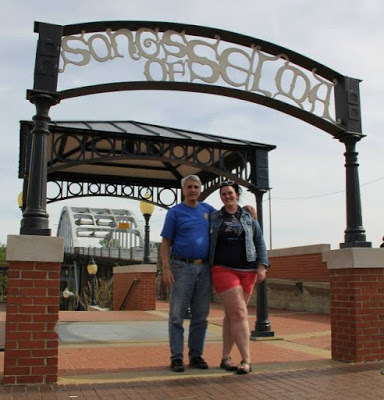 Pettus Bridge in Selma, AlabamaIt was ten years earlier that Dr. Martin Luther King Junior sealed a movement with a speech entitled “I have a Dream.” Within the speech he said, “I have a dream that one day this nation will rise up and live out the true meaning of its creed: "We hold these truths to be self-evident: that all men are created equal."”
Pettus Bridge in Selma, AlabamaIt was ten years earlier that Dr. Martin Luther King Junior sealed a movement with a speech entitled “I have a Dream.” Within the speech he said, “I have a dream that one day this nation will rise up and live out the true meaning of its creed: "We hold these truths to be self-evident: that all men are created equal."”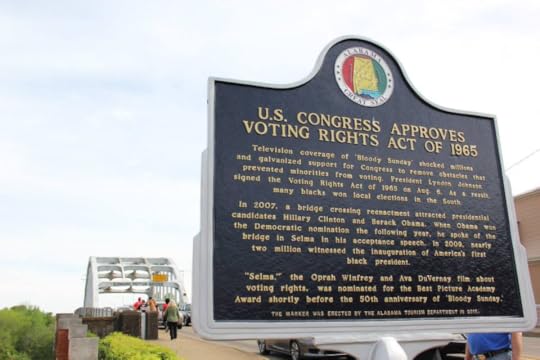 The dream comes from a scripture in the Bible, “God created man in his own image, in the image of God he created him; male and female he created them. (Genesis 1:27)” God created humans. The scripture shows us we are all humans regardless of gender. The scripture does not put limits on how human we are according to age, race, hair color (or quantity of hair), eye color, economic status, mental ability, physical limitations, nationality, the clothing we wear, religion, or any other qualifier. We are all humans. We are all of equal value to God, and by implication we should all be of equal value to each other.Unfortunately, Martin Luther King’s dream is still not a reality, and probably never will be. As long as people exist some individuals will put down other individuals based on their own biased viewpoint. This goes for people of faith as well as people of no faith, although as people of faith we should know better.
The dream comes from a scripture in the Bible, “God created man in his own image, in the image of God he created him; male and female he created them. (Genesis 1:27)” God created humans. The scripture shows us we are all humans regardless of gender. The scripture does not put limits on how human we are according to age, race, hair color (or quantity of hair), eye color, economic status, mental ability, physical limitations, nationality, the clothing we wear, religion, or any other qualifier. We are all humans. We are all of equal value to God, and by implication we should all be of equal value to each other.Unfortunately, Martin Luther King’s dream is still not a reality, and probably never will be. As long as people exist some individuals will put down other individuals based on their own biased viewpoint. This goes for people of faith as well as people of no faith, although as people of faith we should know better.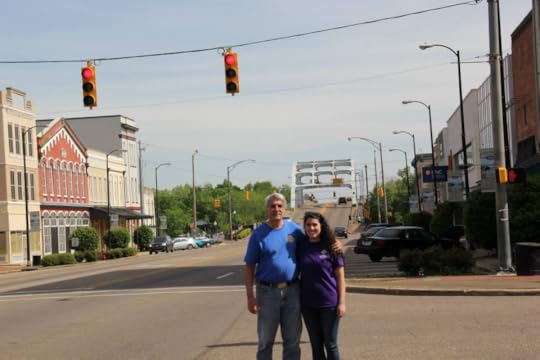 The Bible tells us we should care for each other. Zechariah wrote (quoting Moses from Dt. 10:18), “The LORD of hosts said, 'Dispense true justice and practice kindness and compassion each to his brother; and do not oppress the widow or the orphan, the stranger or the poor; and do not devise evil in your hearts against one another.'” (Zech 7:9-10) He pronounced a punishment because, “But they refused to pay attention and turned a stubborn shoulder and stopped their ears from hearing. They made their hearts like flint so that they could not hear the law and the words which the LORD of hosts had sent by His Spirit through the former prophets; therefore great wrath came from the LORD of hosts.” (Zech 7:11-12)
The Bible tells us we should care for each other. Zechariah wrote (quoting Moses from Dt. 10:18), “The LORD of hosts said, 'Dispense true justice and practice kindness and compassion each to his brother; and do not oppress the widow or the orphan, the stranger or the poor; and do not devise evil in your hearts against one another.'” (Zech 7:9-10) He pronounced a punishment because, “But they refused to pay attention and turned a stubborn shoulder and stopped their ears from hearing. They made their hearts like flint so that they could not hear the law and the words which the LORD of hosts had sent by His Spirit through the former prophets; therefore great wrath came from the LORD of hosts.” (Zech 7:11-12) During the recent election hatred of others came to the forefront. This hatred was spoken not only through the rhetoric of politicians (which is inexcusable because they are asking us to make them our leaders {and therefore examples!}), but words of hate were also spoken by Christians. I saw these words on facebook, but not only there, I have heard the words from the mouths of those I know. When I confront them they arch their backs and tell me they are right for putting others down.
During the recent election hatred of others came to the forefront. This hatred was spoken not only through the rhetoric of politicians (which is inexcusable because they are asking us to make them our leaders {and therefore examples!}), but words of hate were also spoken by Christians. I saw these words on facebook, but not only there, I have heard the words from the mouths of those I know. When I confront them they arch their backs and tell me they are right for putting others down.
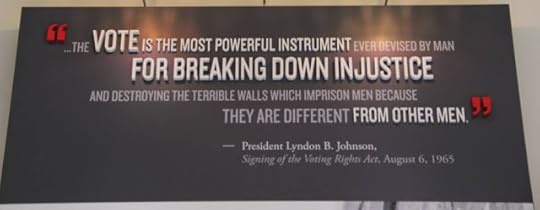 This makes me uncomfortable in church. Can I trust the words of those leaders who spoke hatred against others? Zechariah would advise me, “they refused to pay attention and turned a stubborn shoulder and stopped their ears from hearing,” so why should I listen to the advice of leaders who show hatred. (Some have explained it is not hatred, it is fear of people different than them.) I remember when Baptists (and I can, even 40 years after the fact, tell you what church they attended) persecuted me and thre things at me for being Jewish during my Middle School years. I can name people who even yet show prejudice, although life has taught me to ignore their words and acts.
This makes me uncomfortable in church. Can I trust the words of those leaders who spoke hatred against others? Zechariah would advise me, “they refused to pay attention and turned a stubborn shoulder and stopped their ears from hearing,” so why should I listen to the advice of leaders who show hatred. (Some have explained it is not hatred, it is fear of people different than them.) I remember when Baptists (and I can, even 40 years after the fact, tell you what church they attended) persecuted me and thre things at me for being Jewish during my Middle School years. I can name people who even yet show prejudice, although life has taught me to ignore their words and acts.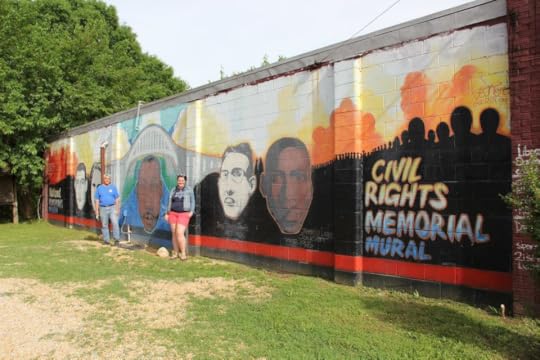 As Martin Luther King, I have a dream that all people would be treated as equals. That women would not be put down for being females (receiving the same respect and the same pay), that lanes would not be blocked off for the rich in the extremely tight and congested lanes of the Charlotte airport (and I am sure others), that public roads would not be designated for those who can afford the toll (at the expense of those who can not), and that people of different faiths would learn about each other and speak with one another with respect. I pray we would treat people as people, and come to know them well enough to see the gifts God has placed within them, and then open doors so they can use those gifts. I pray that a spirit of community and care would return to our country and we would come to know our neighbors by name and tend to their needs.
As Martin Luther King, I have a dream that all people would be treated as equals. That women would not be put down for being females (receiving the same respect and the same pay), that lanes would not be blocked off for the rich in the extremely tight and congested lanes of the Charlotte airport (and I am sure others), that public roads would not be designated for those who can afford the toll (at the expense of those who can not), and that people of different faiths would learn about each other and speak with one another with respect. I pray we would treat people as people, and come to know them well enough to see the gifts God has placed within them, and then open doors so they can use those gifts. I pray that a spirit of community and care would return to our country and we would come to know our neighbors by name and tend to their needs.
I share the dream with Dr. King and the founders of our nation that all people would “live out the true meaning of its creed: "We hold these truths to be self-evident: that all men are created equal."”
 Pettus Bridge in Selma, AlabamaIt was ten years earlier that Dr. Martin Luther King Junior sealed a movement with a speech entitled “I have a Dream.” Within the speech he said, “I have a dream that one day this nation will rise up and live out the true meaning of its creed: "We hold these truths to be self-evident: that all men are created equal."”
Pettus Bridge in Selma, AlabamaIt was ten years earlier that Dr. Martin Luther King Junior sealed a movement with a speech entitled “I have a Dream.” Within the speech he said, “I have a dream that one day this nation will rise up and live out the true meaning of its creed: "We hold these truths to be self-evident: that all men are created equal."” The dream comes from a scripture in the Bible, “God created man in his own image, in the image of God he created him; male and female he created them. (Genesis 1:27)” God created humans. The scripture shows us we are all humans regardless of gender. The scripture does not put limits on how human we are according to age, race, hair color (or quantity of hair), eye color, economic status, mental ability, physical limitations, nationality, the clothing we wear, religion, or any other qualifier. We are all humans. We are all of equal value to God, and by implication we should all be of equal value to each other.Unfortunately, Martin Luther King’s dream is still not a reality, and probably never will be. As long as people exist some individuals will put down other individuals based on their own biased viewpoint. This goes for people of faith as well as people of no faith, although as people of faith we should know better.
The dream comes from a scripture in the Bible, “God created man in his own image, in the image of God he created him; male and female he created them. (Genesis 1:27)” God created humans. The scripture shows us we are all humans regardless of gender. The scripture does not put limits on how human we are according to age, race, hair color (or quantity of hair), eye color, economic status, mental ability, physical limitations, nationality, the clothing we wear, religion, or any other qualifier. We are all humans. We are all of equal value to God, and by implication we should all be of equal value to each other.Unfortunately, Martin Luther King’s dream is still not a reality, and probably never will be. As long as people exist some individuals will put down other individuals based on their own biased viewpoint. This goes for people of faith as well as people of no faith, although as people of faith we should know better. The Bible tells us we should care for each other. Zechariah wrote (quoting Moses from Dt. 10:18), “The LORD of hosts said, 'Dispense true justice and practice kindness and compassion each to his brother; and do not oppress the widow or the orphan, the stranger or the poor; and do not devise evil in your hearts against one another.'” (Zech 7:9-10) He pronounced a punishment because, “But they refused to pay attention and turned a stubborn shoulder and stopped their ears from hearing. They made their hearts like flint so that they could not hear the law and the words which the LORD of hosts had sent by His Spirit through the former prophets; therefore great wrath came from the LORD of hosts.” (Zech 7:11-12)
The Bible tells us we should care for each other. Zechariah wrote (quoting Moses from Dt. 10:18), “The LORD of hosts said, 'Dispense true justice and practice kindness and compassion each to his brother; and do not oppress the widow or the orphan, the stranger or the poor; and do not devise evil in your hearts against one another.'” (Zech 7:9-10) He pronounced a punishment because, “But they refused to pay attention and turned a stubborn shoulder and stopped their ears from hearing. They made their hearts like flint so that they could not hear the law and the words which the LORD of hosts had sent by His Spirit through the former prophets; therefore great wrath came from the LORD of hosts.” (Zech 7:11-12) During the recent election hatred of others came to the forefront. This hatred was spoken not only through the rhetoric of politicians (which is inexcusable because they are asking us to make them our leaders {and therefore examples!}), but words of hate were also spoken by Christians. I saw these words on facebook, but not only there, I have heard the words from the mouths of those I know. When I confront them they arch their backs and tell me they are right for putting others down.
During the recent election hatred of others came to the forefront. This hatred was spoken not only through the rhetoric of politicians (which is inexcusable because they are asking us to make them our leaders {and therefore examples!}), but words of hate were also spoken by Christians. I saw these words on facebook, but not only there, I have heard the words from the mouths of those I know. When I confront them they arch their backs and tell me they are right for putting others down.
 This makes me uncomfortable in church. Can I trust the words of those leaders who spoke hatred against others? Zechariah would advise me, “they refused to pay attention and turned a stubborn shoulder and stopped their ears from hearing,” so why should I listen to the advice of leaders who show hatred. (Some have explained it is not hatred, it is fear of people different than them.) I remember when Baptists (and I can, even 40 years after the fact, tell you what church they attended) persecuted me and thre things at me for being Jewish during my Middle School years. I can name people who even yet show prejudice, although life has taught me to ignore their words and acts.
This makes me uncomfortable in church. Can I trust the words of those leaders who spoke hatred against others? Zechariah would advise me, “they refused to pay attention and turned a stubborn shoulder and stopped their ears from hearing,” so why should I listen to the advice of leaders who show hatred. (Some have explained it is not hatred, it is fear of people different than them.) I remember when Baptists (and I can, even 40 years after the fact, tell you what church they attended) persecuted me and thre things at me for being Jewish during my Middle School years. I can name people who even yet show prejudice, although life has taught me to ignore their words and acts. As Martin Luther King, I have a dream that all people would be treated as equals. That women would not be put down for being females (receiving the same respect and the same pay), that lanes would not be blocked off for the rich in the extremely tight and congested lanes of the Charlotte airport (and I am sure others), that public roads would not be designated for those who can afford the toll (at the expense of those who can not), and that people of different faiths would learn about each other and speak with one another with respect. I pray we would treat people as people, and come to know them well enough to see the gifts God has placed within them, and then open doors so they can use those gifts. I pray that a spirit of community and care would return to our country and we would come to know our neighbors by name and tend to their needs.
As Martin Luther King, I have a dream that all people would be treated as equals. That women would not be put down for being females (receiving the same respect and the same pay), that lanes would not be blocked off for the rich in the extremely tight and congested lanes of the Charlotte airport (and I am sure others), that public roads would not be designated for those who can afford the toll (at the expense of those who can not), and that people of different faiths would learn about each other and speak with one another with respect. I pray we would treat people as people, and come to know them well enough to see the gifts God has placed within them, and then open doors so they can use those gifts. I pray that a spirit of community and care would return to our country and we would come to know our neighbors by name and tend to their needs.I share the dream with Dr. King and the founders of our nation that all people would “live out the true meaning of its creed: "We hold these truths to be self-evident: that all men are created equal."”
Published on January 15, 2017 06:11
January 11, 2017
Discover Meaning in Israel
For all of my life, since the time I was quite young, I have heard stories about the land of Israel. These stories have come from teachers in Sunday school, ministers and family friends. When I grew up, I taught Bible lessons shared out of quarterlies about what life must have been like for people we read about in the Bible. These stories had meaning, but they could have meant more. Throughout my first thirty years of ministry opportunities came to visit Israel, but I stayed at home. Reasons I told myself I didn’t travel included: I did not have the money, I did not have the time, and my family would not want me to be away. But I wish I would have traveled to the Holy Land sooner.
Throughout my first thirty years of ministry opportunities came to visit Israel, but I stayed at home. Reasons I told myself I didn’t travel included: I did not have the money, I did not have the time, and my family would not want me to be away. But I wish I would have traveled to the Holy Land sooner.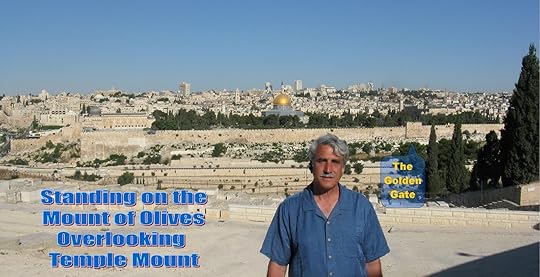 On my first trip to Israel, I found I had many false impressions of the land. I identified too much of what the Bible said to what I had personally experienced. I saw the land as heavily wooded (as the eastern United States) and I believed travel in the Bible covered great distances. I found that neither of these perceptions were true.
On my first trip to Israel, I found I had many false impressions of the land. I identified too much of what the Bible said to what I had personally experienced. I saw the land as heavily wooded (as the eastern United States) and I believed travel in the Bible covered great distances. I found that neither of these perceptions were true. The Bible has always been important to me, and so I always study to make sure I can share accurately the words of Scripture. When I journeyed to Israel, however, I discovered many new things. I saw first hand the places where people lived. I walked with a guide who pointed out how the land itself shaped events I had but read about. I tasted the food and experienced the life of the people.
The Bible has always been important to me, and so I always study to make sure I can share accurately the words of Scripture. When I journeyed to Israel, however, I discovered many new things. I saw first hand the places where people lived. I walked with a guide who pointed out how the land itself shaped events I had but read about. I tasted the food and experienced the life of the people. I traveled along roads in Jerusalem used by Abraham, Isaac, Jacob, and King David. I hiked in the desert and rode a camel in regions traveled by Moses. I walked in the footsteps of Jesus along the shores of the sea of Galilee. In all of this, I thought about the people of the Bible and Bible lessons.
I traveled along roads in Jerusalem used by Abraham, Isaac, Jacob, and King David. I hiked in the desert and rode a camel in regions traveled by Moses. I walked in the footsteps of Jesus along the shores of the sea of Galilee. In all of this, I thought about the people of the Bible and Bible lessons. Then came the realization: it was here! That happens to almost everyone. At first they plan and go on a trip. People have their own preconceived notions of what it will be like, until the land and the Lord grips them. They realize for the first time: “this is the very place!” It happened to me and it is an indescribable experience.
Then came the realization: it was here! That happens to almost everyone. At first they plan and go on a trip. People have their own preconceived notions of what it will be like, until the land and the Lord grips them. They realize for the first time: “this is the very place!” It happened to me and it is an indescribable experience. Because of my trips to Israel, I am different. The people and stories have a fresh meaning. The words of scripture have taken on a new life. As I talk to people, whether telling about my trip or stories from the Scripture, I visualize the things I am saying. I teach and tell the stories I have known for a lifetime with new details because I have been there.I love the land of Israel and its people. I want to share this passion with you on a journey I will take during the month of May 2018. Will you come with me? Please click the link to learn the details and to sign up.
Because of my trips to Israel, I am different. The people and stories have a fresh meaning. The words of scripture have taken on a new life. As I talk to people, whether telling about my trip or stories from the Scripture, I visualize the things I am saying. I teach and tell the stories I have known for a lifetime with new details because I have been there.I love the land of Israel and its people. I want to share this passion with you on a journey I will take during the month of May 2018. Will you come with me? Please click the link to learn the details and to sign up.
 Throughout my first thirty years of ministry opportunities came to visit Israel, but I stayed at home. Reasons I told myself I didn’t travel included: I did not have the money, I did not have the time, and my family would not want me to be away. But I wish I would have traveled to the Holy Land sooner.
Throughout my first thirty years of ministry opportunities came to visit Israel, but I stayed at home. Reasons I told myself I didn’t travel included: I did not have the money, I did not have the time, and my family would not want me to be away. But I wish I would have traveled to the Holy Land sooner. On my first trip to Israel, I found I had many false impressions of the land. I identified too much of what the Bible said to what I had personally experienced. I saw the land as heavily wooded (as the eastern United States) and I believed travel in the Bible covered great distances. I found that neither of these perceptions were true.
On my first trip to Israel, I found I had many false impressions of the land. I identified too much of what the Bible said to what I had personally experienced. I saw the land as heavily wooded (as the eastern United States) and I believed travel in the Bible covered great distances. I found that neither of these perceptions were true. The Bible has always been important to me, and so I always study to make sure I can share accurately the words of Scripture. When I journeyed to Israel, however, I discovered many new things. I saw first hand the places where people lived. I walked with a guide who pointed out how the land itself shaped events I had but read about. I tasted the food and experienced the life of the people.
The Bible has always been important to me, and so I always study to make sure I can share accurately the words of Scripture. When I journeyed to Israel, however, I discovered many new things. I saw first hand the places where people lived. I walked with a guide who pointed out how the land itself shaped events I had but read about. I tasted the food and experienced the life of the people. I traveled along roads in Jerusalem used by Abraham, Isaac, Jacob, and King David. I hiked in the desert and rode a camel in regions traveled by Moses. I walked in the footsteps of Jesus along the shores of the sea of Galilee. In all of this, I thought about the people of the Bible and Bible lessons.
I traveled along roads in Jerusalem used by Abraham, Isaac, Jacob, and King David. I hiked in the desert and rode a camel in regions traveled by Moses. I walked in the footsteps of Jesus along the shores of the sea of Galilee. In all of this, I thought about the people of the Bible and Bible lessons. Then came the realization: it was here! That happens to almost everyone. At first they plan and go on a trip. People have their own preconceived notions of what it will be like, until the land and the Lord grips them. They realize for the first time: “this is the very place!” It happened to me and it is an indescribable experience.
Then came the realization: it was here! That happens to almost everyone. At first they plan and go on a trip. People have their own preconceived notions of what it will be like, until the land and the Lord grips them. They realize for the first time: “this is the very place!” It happened to me and it is an indescribable experience. Because of my trips to Israel, I am different. The people and stories have a fresh meaning. The words of scripture have taken on a new life. As I talk to people, whether telling about my trip or stories from the Scripture, I visualize the things I am saying. I teach and tell the stories I have known for a lifetime with new details because I have been there.I love the land of Israel and its people. I want to share this passion with you on a journey I will take during the month of May 2018. Will you come with me? Please click the link to learn the details and to sign up.
Because of my trips to Israel, I am different. The people and stories have a fresh meaning. The words of scripture have taken on a new life. As I talk to people, whether telling about my trip or stories from the Scripture, I visualize the things I am saying. I teach and tell the stories I have known for a lifetime with new details because I have been there.I love the land of Israel and its people. I want to share this passion with you on a journey I will take during the month of May 2018. Will you come with me? Please click the link to learn the details and to sign up.
Published on January 11, 2017 03:30
January 6, 2017
Israel Settlement Worries
“Winds in the east, there’s a mist coming in, like something is brewin’ and ’bout to begin,” a popular quote from the movie Mary Poppins, can be used to speak about potential changes and results which could occur this year within the boundaries of Israel and the West Bank. Long-standing policies which have been in place from the 1970s and before could be overturned and reversed. Will the results be good or disastrous? - That remains to be seen.Many have asked me for my opinion on Israeli politics and United States policies concerning Israel because I was raised in a Jewish home. To be sure, there is a love for the land and the nation which goes back to the fact that I was inculturated with the pride bursting forth from my people during the early years of Israel’s new-found independence. I learned about the land in Temple, I planted trees every year, and I heard glowing testimonies from people who visited the new nation.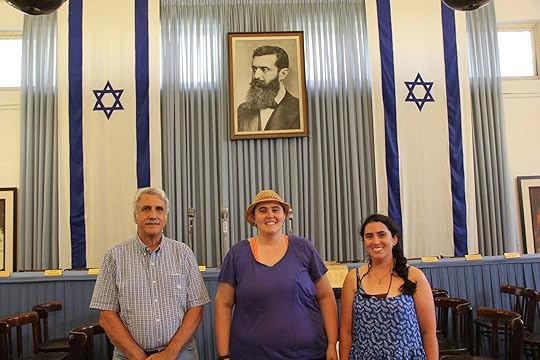 As an adult I have studied and taught stories from the Bible and researched the associated geography, history, and current events. In 2012, 2014, and 2016 I visited Israel. My love for the land has grown. And as my love and learning have grown, I have come to recognize that Israeli-Palestinian relations are intricate and complex. Too many people think solutions are easy, but history should teach us otherwise.I have watched and prayed during many of the hardships Israel faced in its early years. There were wars in 1948, 1956, 1967, and 1973. The nation has faced many other threats beyond the actual wars including shelling from the Golan Heights, Intifada, Palestinian uprisings, Lebanese and Syrian civil wars, and shellings from the Gaza Strip and from Iraq. The hostilities seem to be endless and continuing.
As an adult I have studied and taught stories from the Bible and researched the associated geography, history, and current events. In 2012, 2014, and 2016 I visited Israel. My love for the land has grown. And as my love and learning have grown, I have come to recognize that Israeli-Palestinian relations are intricate and complex. Too many people think solutions are easy, but history should teach us otherwise.I have watched and prayed during many of the hardships Israel faced in its early years. There were wars in 1948, 1956, 1967, and 1973. The nation has faced many other threats beyond the actual wars including shelling from the Golan Heights, Intifada, Palestinian uprisings, Lebanese and Syrian civil wars, and shellings from the Gaza Strip and from Iraq. The hostilities seem to be endless and continuing.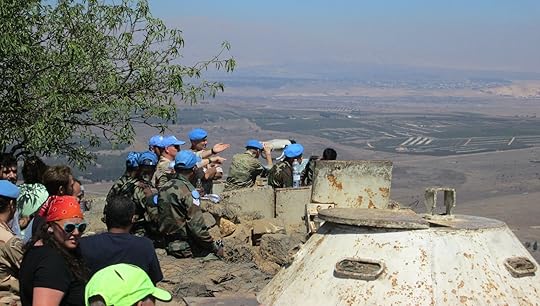 As I studied the journey of Joseph and Mary through Israel and the Palestinian territories by virtually traveling Israeli Highway 60, I listened to the voices of many people. One was a Palestinian reporter leading a donkey from Jenin to Bethlehem. He reported the trials of each border crossing. Second were the voices of Orthodox Jews and other Hebrew settlers in the occupied territory. I heard their voices of pride and commitment advocating their right to live on the land. I also heard the fear they feel by living within fenced compounds which can be attacked at any time. I read West Bank community blogs, Facebook groups, and municipal pages conveying the animosity they felt toward the perceived occupiers of their land. Proponents from each side are openly speaking their feelings toward each other and the outside intruders who are attempting to sway the politics of the region.Peace and harmony will not come easily to Israel or the Palestinian territories.
As I studied the journey of Joseph and Mary through Israel and the Palestinian territories by virtually traveling Israeli Highway 60, I listened to the voices of many people. One was a Palestinian reporter leading a donkey from Jenin to Bethlehem. He reported the trials of each border crossing. Second were the voices of Orthodox Jews and other Hebrew settlers in the occupied territory. I heard their voices of pride and commitment advocating their right to live on the land. I also heard the fear they feel by living within fenced compounds which can be attacked at any time. I read West Bank community blogs, Facebook groups, and municipal pages conveying the animosity they felt toward the perceived occupiers of their land. Proponents from each side are openly speaking their feelings toward each other and the outside intruders who are attempting to sway the politics of the region.Peace and harmony will not come easily to Israel or the Palestinian territories.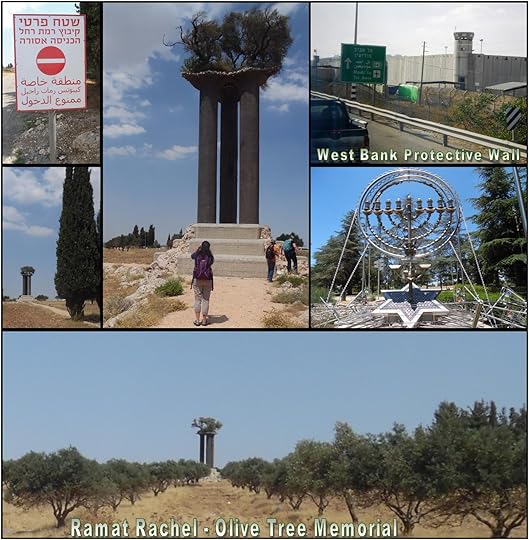 And I keep getting asked, “Do you think” Obama, or Trump, or someone else “has the solution.” I do not think any of the “solutions” offered today by politicians will solve the problem. I think some forced solutions will make things worse.In my studies I have read journals from pilgrims who traversed the “Promised Land” during the eighteenth and nineteenth centuries. The hostilities which we see today were either nonexistent or minimal during these former times. I wish we could return to more peaceful times when a traveler could visit the land. But during my lifetime, I am sure that we will not.Some of the problems are racial or cultural. Other problems are political, created when artificial lines have been drawn giving this group or that group primary rights over a region of the land. The problems are compounded when outsiders pit the people of the land against one another.Can peace come to Israel? I believe it can. But it will not come quickly.Peace between groups with differences comes through the passing of time, often many years, decades, or generations. It comes when opposing parties begin to talk, learn names, listen to and comprehend the other party's ideas, and when they begin to see the other side as actual people rather than faceless and nameless opponents. During the first stage of interaction, solutions are not put forth. The agenda is for opposing parties to begin talking and then to understand that they are talking to people who have families, desires, and emotions just like them. We experimented with such a solution to similar problems within the United States during the Civil Rights era. Racial groups met and worked alongside members of another race. Their children went to school together, and in time they moved into communities together. Change did not come easily, but it did come. Today people of different races are friends with one another and care for each other. The same model can be used in Israel. As Palestinians, Orthodox Jews, secular Jews, and other interested parties begin to communicate and know and respect one another, they can open the “can of worms” and talk about problems. They can take baby steps and then bigger steps until harmony appears between groups. Then they can teach others and repeat the process. The process takes a generation or two, because animosity and hatred are not easily removed. Over time, however, people can be intentionally moved and acceptance of the other can come.
And I keep getting asked, “Do you think” Obama, or Trump, or someone else “has the solution.” I do not think any of the “solutions” offered today by politicians will solve the problem. I think some forced solutions will make things worse.In my studies I have read journals from pilgrims who traversed the “Promised Land” during the eighteenth and nineteenth centuries. The hostilities which we see today were either nonexistent or minimal during these former times. I wish we could return to more peaceful times when a traveler could visit the land. But during my lifetime, I am sure that we will not.Some of the problems are racial or cultural. Other problems are political, created when artificial lines have been drawn giving this group or that group primary rights over a region of the land. The problems are compounded when outsiders pit the people of the land against one another.Can peace come to Israel? I believe it can. But it will not come quickly.Peace between groups with differences comes through the passing of time, often many years, decades, or generations. It comes when opposing parties begin to talk, learn names, listen to and comprehend the other party's ideas, and when they begin to see the other side as actual people rather than faceless and nameless opponents. During the first stage of interaction, solutions are not put forth. The agenda is for opposing parties to begin talking and then to understand that they are talking to people who have families, desires, and emotions just like them. We experimented with such a solution to similar problems within the United States during the Civil Rights era. Racial groups met and worked alongside members of another race. Their children went to school together, and in time they moved into communities together. Change did not come easily, but it did come. Today people of different races are friends with one another and care for each other. The same model can be used in Israel. As Palestinians, Orthodox Jews, secular Jews, and other interested parties begin to communicate and know and respect one another, they can open the “can of worms” and talk about problems. They can take baby steps and then bigger steps until harmony appears between groups. Then they can teach others and repeat the process. The process takes a generation or two, because animosity and hatred are not easily removed. Over time, however, people can be intentionally moved and acceptance of the other can come.
We must always be vigilant because peace is easily shaken. Animosities can surface whether it is the result of racial tensions in the United States or distrust overseas.
 As an adult I have studied and taught stories from the Bible and researched the associated geography, history, and current events. In 2012, 2014, and 2016 I visited Israel. My love for the land has grown. And as my love and learning have grown, I have come to recognize that Israeli-Palestinian relations are intricate and complex. Too many people think solutions are easy, but history should teach us otherwise.I have watched and prayed during many of the hardships Israel faced in its early years. There were wars in 1948, 1956, 1967, and 1973. The nation has faced many other threats beyond the actual wars including shelling from the Golan Heights, Intifada, Palestinian uprisings, Lebanese and Syrian civil wars, and shellings from the Gaza Strip and from Iraq. The hostilities seem to be endless and continuing.
As an adult I have studied and taught stories from the Bible and researched the associated geography, history, and current events. In 2012, 2014, and 2016 I visited Israel. My love for the land has grown. And as my love and learning have grown, I have come to recognize that Israeli-Palestinian relations are intricate and complex. Too many people think solutions are easy, but history should teach us otherwise.I have watched and prayed during many of the hardships Israel faced in its early years. There were wars in 1948, 1956, 1967, and 1973. The nation has faced many other threats beyond the actual wars including shelling from the Golan Heights, Intifada, Palestinian uprisings, Lebanese and Syrian civil wars, and shellings from the Gaza Strip and from Iraq. The hostilities seem to be endless and continuing. As I studied the journey of Joseph and Mary through Israel and the Palestinian territories by virtually traveling Israeli Highway 60, I listened to the voices of many people. One was a Palestinian reporter leading a donkey from Jenin to Bethlehem. He reported the trials of each border crossing. Second were the voices of Orthodox Jews and other Hebrew settlers in the occupied territory. I heard their voices of pride and commitment advocating their right to live on the land. I also heard the fear they feel by living within fenced compounds which can be attacked at any time. I read West Bank community blogs, Facebook groups, and municipal pages conveying the animosity they felt toward the perceived occupiers of their land. Proponents from each side are openly speaking their feelings toward each other and the outside intruders who are attempting to sway the politics of the region.Peace and harmony will not come easily to Israel or the Palestinian territories.
As I studied the journey of Joseph and Mary through Israel and the Palestinian territories by virtually traveling Israeli Highway 60, I listened to the voices of many people. One was a Palestinian reporter leading a donkey from Jenin to Bethlehem. He reported the trials of each border crossing. Second were the voices of Orthodox Jews and other Hebrew settlers in the occupied territory. I heard their voices of pride and commitment advocating their right to live on the land. I also heard the fear they feel by living within fenced compounds which can be attacked at any time. I read West Bank community blogs, Facebook groups, and municipal pages conveying the animosity they felt toward the perceived occupiers of their land. Proponents from each side are openly speaking their feelings toward each other and the outside intruders who are attempting to sway the politics of the region.Peace and harmony will not come easily to Israel or the Palestinian territories. And I keep getting asked, “Do you think” Obama, or Trump, or someone else “has the solution.” I do not think any of the “solutions” offered today by politicians will solve the problem. I think some forced solutions will make things worse.In my studies I have read journals from pilgrims who traversed the “Promised Land” during the eighteenth and nineteenth centuries. The hostilities which we see today were either nonexistent or minimal during these former times. I wish we could return to more peaceful times when a traveler could visit the land. But during my lifetime, I am sure that we will not.Some of the problems are racial or cultural. Other problems are political, created when artificial lines have been drawn giving this group or that group primary rights over a region of the land. The problems are compounded when outsiders pit the people of the land against one another.Can peace come to Israel? I believe it can. But it will not come quickly.Peace between groups with differences comes through the passing of time, often many years, decades, or generations. It comes when opposing parties begin to talk, learn names, listen to and comprehend the other party's ideas, and when they begin to see the other side as actual people rather than faceless and nameless opponents. During the first stage of interaction, solutions are not put forth. The agenda is for opposing parties to begin talking and then to understand that they are talking to people who have families, desires, and emotions just like them. We experimented with such a solution to similar problems within the United States during the Civil Rights era. Racial groups met and worked alongside members of another race. Their children went to school together, and in time they moved into communities together. Change did not come easily, but it did come. Today people of different races are friends with one another and care for each other. The same model can be used in Israel. As Palestinians, Orthodox Jews, secular Jews, and other interested parties begin to communicate and know and respect one another, they can open the “can of worms” and talk about problems. They can take baby steps and then bigger steps until harmony appears between groups. Then they can teach others and repeat the process. The process takes a generation or two, because animosity and hatred are not easily removed. Over time, however, people can be intentionally moved and acceptance of the other can come.
And I keep getting asked, “Do you think” Obama, or Trump, or someone else “has the solution.” I do not think any of the “solutions” offered today by politicians will solve the problem. I think some forced solutions will make things worse.In my studies I have read journals from pilgrims who traversed the “Promised Land” during the eighteenth and nineteenth centuries. The hostilities which we see today were either nonexistent or minimal during these former times. I wish we could return to more peaceful times when a traveler could visit the land. But during my lifetime, I am sure that we will not.Some of the problems are racial or cultural. Other problems are political, created when artificial lines have been drawn giving this group or that group primary rights over a region of the land. The problems are compounded when outsiders pit the people of the land against one another.Can peace come to Israel? I believe it can. But it will not come quickly.Peace between groups with differences comes through the passing of time, often many years, decades, or generations. It comes when opposing parties begin to talk, learn names, listen to and comprehend the other party's ideas, and when they begin to see the other side as actual people rather than faceless and nameless opponents. During the first stage of interaction, solutions are not put forth. The agenda is for opposing parties to begin talking and then to understand that they are talking to people who have families, desires, and emotions just like them. We experimented with such a solution to similar problems within the United States during the Civil Rights era. Racial groups met and worked alongside members of another race. Their children went to school together, and in time they moved into communities together. Change did not come easily, but it did come. Today people of different races are friends with one another and care for each other. The same model can be used in Israel. As Palestinians, Orthodox Jews, secular Jews, and other interested parties begin to communicate and know and respect one another, they can open the “can of worms” and talk about problems. They can take baby steps and then bigger steps until harmony appears between groups. Then they can teach others and repeat the process. The process takes a generation or two, because animosity and hatred are not easily removed. Over time, however, people can be intentionally moved and acceptance of the other can come. We must always be vigilant because peace is easily shaken. Animosities can surface whether it is the result of racial tensions in the United States or distrust overseas.
Published on January 06, 2017 03:30



